Inbox and Environment News: Issue 422
September 22 - 28, 2019: Issue 422
Mona Vale Road Upgrade: Fauna Fencing Being Installed
Friday September 20, 2019
A Transport for NSW spokesperson has stated this morning:
''Fauna fencing is now being installed along the Mona Vale Road East upgrade corridor.
Fencing is also being installed opposite the Mona Vale Road West upgrade as part of early work, on the southern side of the road between Kimbriki Road and Tumburra Street at Ingleside.
The fauna fencing is being progressively installed as road work continues and will aim to minimise the likelihood of fauna crossing Mona Vale Road.
The fencing will be 1.8 metres high and dug into the ground to ensure all fauna cannot make their way under the fence.''
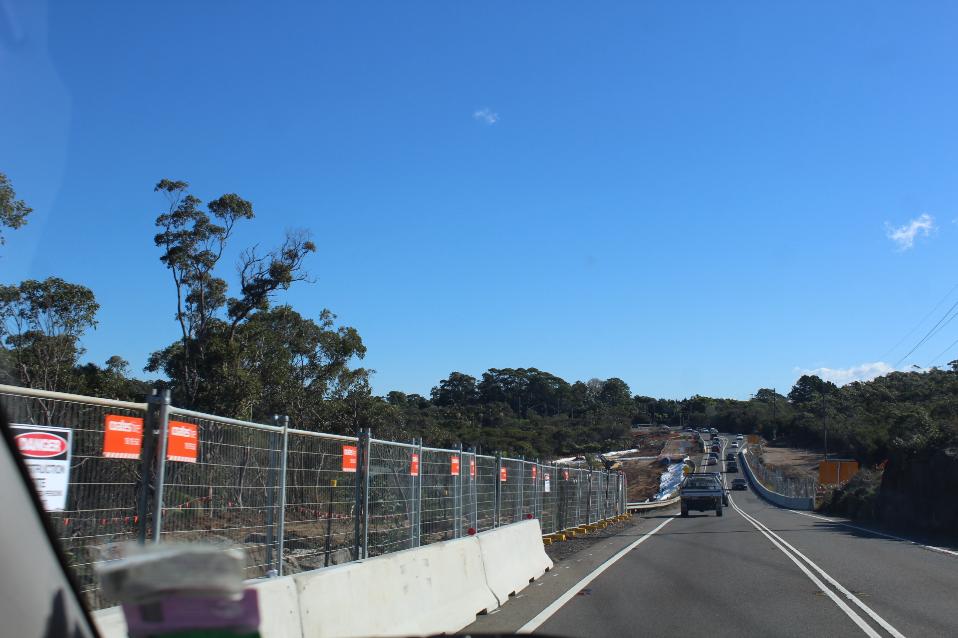
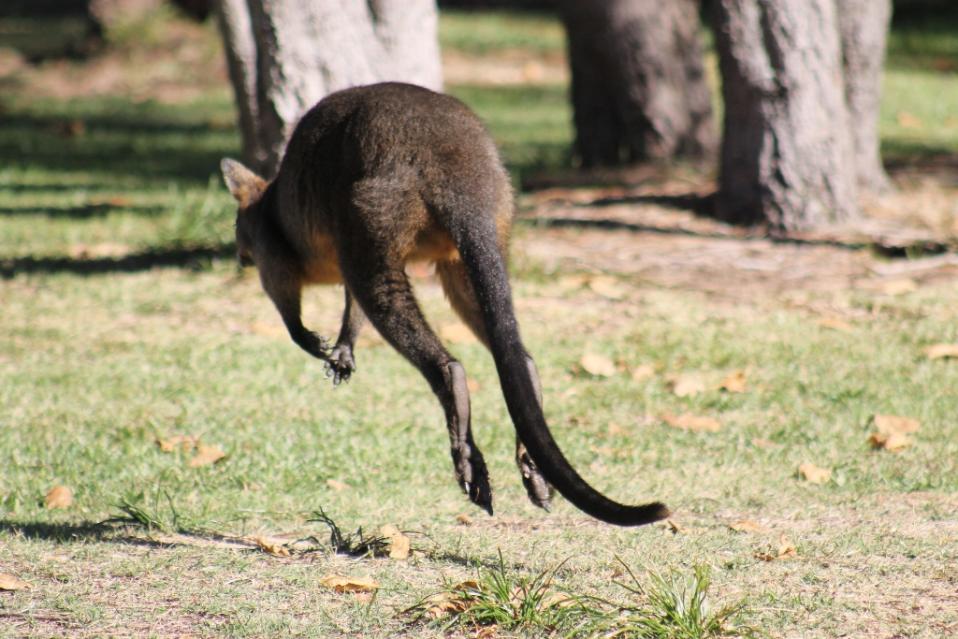
A Wet Day In Pittwater
photo by Michael Mannington, September 18th, 2019
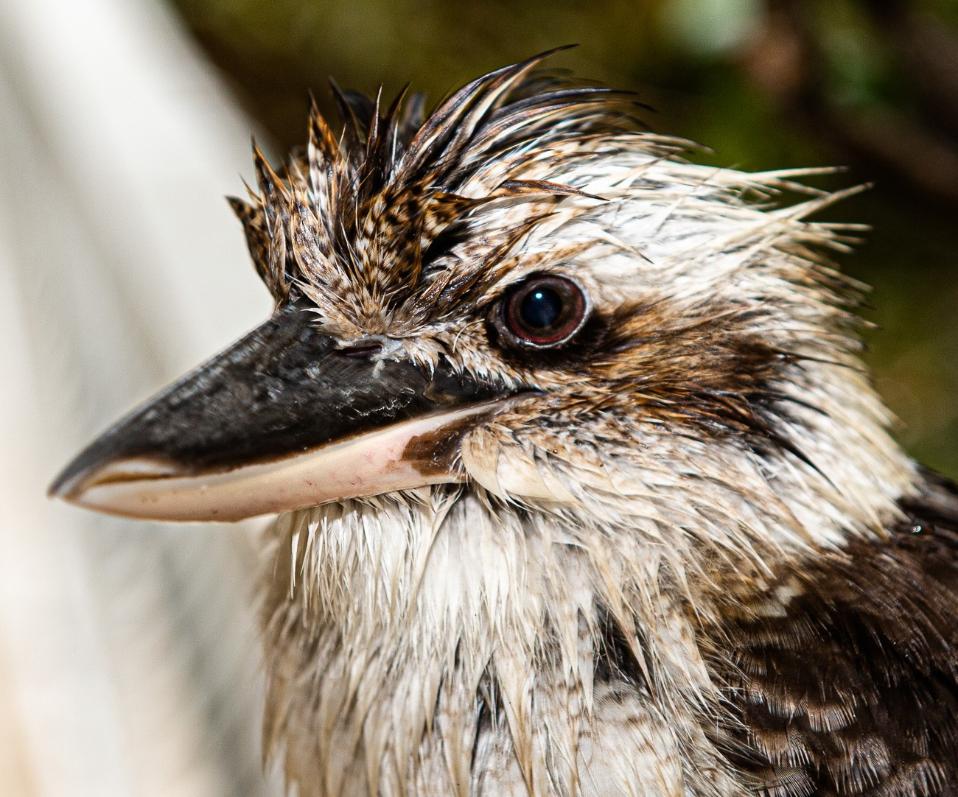
Bad Hair Day In Pittwater
photo by Michael Mannington, Thursday September 19, 2019
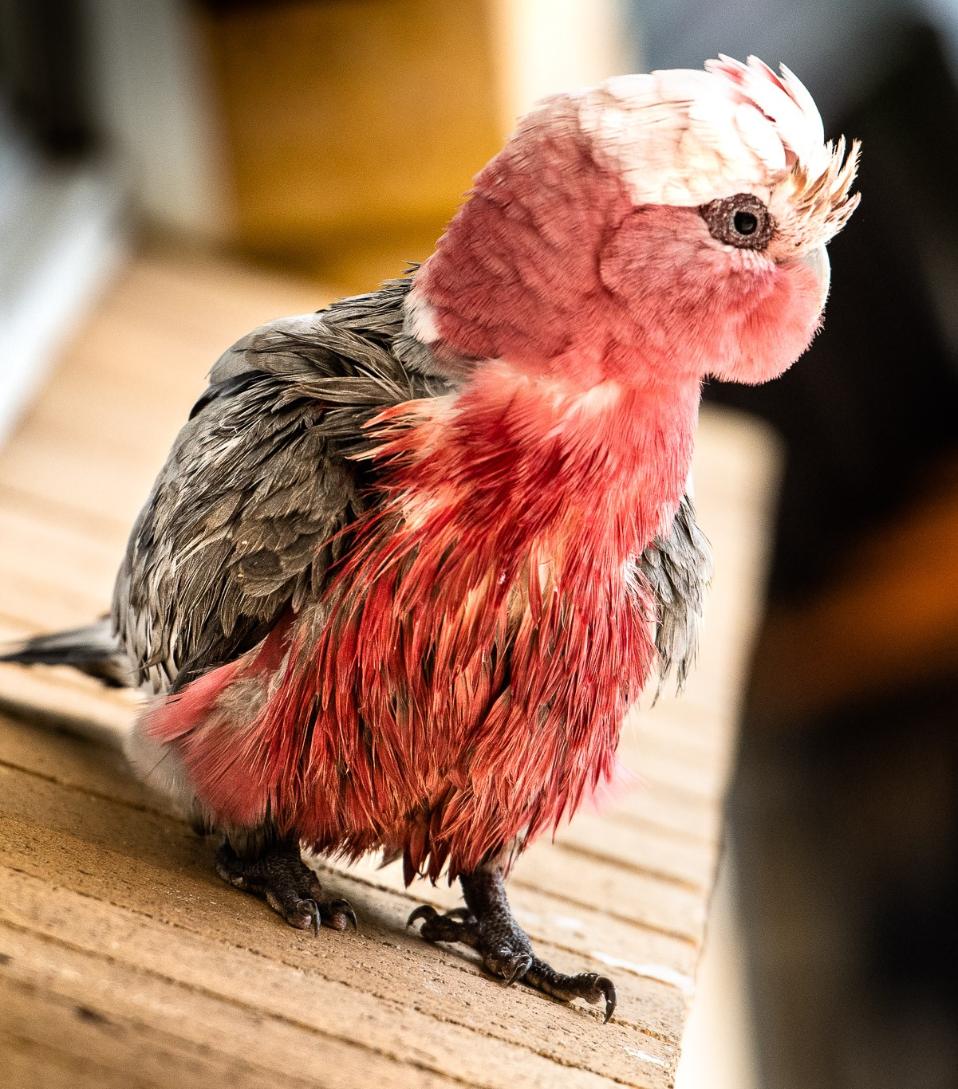
New Study Finds U.S. And Canada Have Lost Almost 3 Billion Birds Since 1970
September 19, 2019
A study published today in the journal Science reveals that since 1970, bird populations in the United States and Canada have declined by 29 percent, or almost 3 billion birds, signalling a widespread ecological crisis. The results show tremendous losses across diverse groups of birds and habitats — from iconic songsters such as meadowlarks to long-distance migrants such as swallows and backyard birds including sparrows.
“Multiple, independent lines of evidence show a massive reduction in the abundance of birds,” said Ken Rosenberg, the study's lead author and a senior scientist at the Cornell Lab of Ornithology and American Bird Conservancy. “We expected to see continuing declines of threatened species. But for the first time, the results also showed pervasive losses among common birds across all habitats, including backyard birds.”
The study notes that birds are indicators of environmental health, signaling that natural systems across the U.S. and Canada are now being so severely impacted by human activities that they no longer support the same robust wildlife populations.
The findings show that of nearly 3 billion birds lost, 90 percent belong to 12 bird families, including sparrows, warblers, finches, and swallows — common, widespread species that play influential roles in food webs and ecosystem functioning, from seed dispersal to pest control.
Among the steep declines noted:
- Grassland birds are especially hard hit, with a 53-percent reduction in population — more than 720 million birds — since 1970.
- Shorebirds, most of which frequent sensitive coastal habitats, were already at dangerously low numbers and have lost more than one-third of their population.
- The volume of spring migration, measured by radar in the night skies, has dropped by 14 percent in just the past decade.
“These data are consistent with what we're seeing elsewhere with other taxa showing massive declines, including insects and amphibians,” said coauthor Peter Marra, senior scientist emeritus and former head of the Smithsonian Migratory Bird Center and now director of the Georgetown Environment Initiative at Georgetown University. “It's imperative to address immediate and ongoing threats, both because the domino effects can lead to the decay of ecosystems that humans depend on for our own health and livelihoods — and because people all over the world cherish birds in their own right. Can you imagine a world without birdsong?”
Evidence for the declines emerged from detection of migratory birds in the air from 143 NEXRAD weather radar stations across the continent in a period spanning over 10 years, as well as from nearly 50 years of data collected through multiple monitoring efforts on the ground.
“Citizen-science participants contributed critical scientific data to show the international scale of losses of birds,” said coauthor John Sauer of the U.S. Geological Survey (USGS). “Our results also provide insights into actions we can take to reverse the declines.” The analysis included citizen-science data from the North American Breeding Bird Survey coordinated by the USGS and the Canadian Wildlife Service — the main sources of long-term, large-scale population data for North American birds — the Audubon Christmas Bird Count, and Manomet's International Shorebird Survey.
Although the study did not analyse the causes of declines, it noted that the steep drop in North American birds parallels the losses of birds elsewhere in the world, suggesting multiple interacting causes that reduce breeding success and increase mortality. It noted that the largest factor driving these declines is likely the widespread loss and degradation of habitat, especially due to agricultural intensification and urbanisation.
Other studies have documented mortality from predation by free-roaming domestic cats; collisions with glass, buildings, and other structures; and pervasive use of pesticides associated with widespread declines in insects, an essential food source for birds. Climate change is expected to compound these challenges by altering habitats and threatening plant communities that birds need to survive. More research is needed to pinpoint primary causes for declines in individual species.
“The story is not over,” said coauthor Michael Parr, president of American Bird Conservancy. “There are so many ways to help save birds. Some require policy decisions such as strengthening the Migratory Bird Treaty Act. We can also work to ban harmful pesticides and properly fund effective bird conservation programs. Each of us can make a difference with everyday actions that together can save the lives of millions of birds — actions like making windows safer for birds, keeping cats indoors, and protecting habitat.”
The study also documents a few promising rebounds resulting from galvanized human efforts. Waterfowl (ducks, geese, and swans) have made a remarkable recovery over the past 50 years, made possible by investments in conservation by hunters and billions of dollars of government funding for wetland protection and restoration. Raptors such as the Bald Eagle have also made spectacular comebacks since the 1970s, after the harmful pesticide DDT was banned and recovery efforts through endangered species legislation in the U.S. and Canada provided critical protection.
“It's a wake-up call that we've lost more than a quarter of our birds in the U.S. and Canada,” said coauthor Adam Smith from Environment and Climate Change Canada. “But the crisis reaches far beyond our individual borders. Many of the birds that breed in Canadian backyards migrate through or spend the winter in the U.S. and places farther south — from Mexico and the Caribbean to Central and South America. What our birds need now is an historic, hemispheric effort that unites people and organizations with one common goal: bringing our birds back.”
Rosenberg, K. V., A. M. Dokter, P. J. Blancher, J. R. Sauer, A. C. Smith, P. A. Smith, J. C. Stanton, A. Panjabi, L. Helft, M. Parr, and P. P. Marra. 2019. Science. Vol. 365., Issue 6461.
This paper was published online by the journal Science on Thursday, September 19, 2019, at 2:00 p.m. Eastern U.S. Time. DOI: https://science.sciencemag.org/cgi/doi/10.1126/science.aaw1313
Mona Vale Garden Club's 48th Spring Flower Show
Saturday, 28 September 2019 - 10:00am to 3:00pm
Wonderful display of flowers, potted plants, vegetables, herbs and floral art. Plants, white elephant goods and cakes for sale. Raffles. Refreshments available.
Gold coin entry; $2.00 - children no charge
Ted Blackwood Hall
Cnr Jacksons & Boondah Roads
Warriewood

New Bylong Valley Coal Mine Refused – Climate Impacts Considered
18 September: EDO NSW
On behalf of our client, the Bylong Valley Protection Alliance, the Environmental Defenders Office (EDO NSW) warmly welcomes today’s decision by the Independent Planning Commission to reject the proposed greenfield Bylong coal mine, in part because of its projected greenhouse gas emissions.
This the first IPC decision in relation to a greenfield coal mine since the judgement of February 2019, when EDO NSW acted for Groundswell Gloucester to successfully stop the Rocky Hill coal mine, partly on the basis of expert climate science evidence. EDO NSW – on behalf of our client - commissioned expert evidence on the carbon budget from Dr Will Steffen and this was presented to the IPC.
David Morris, EDO NSW CEO, said, “This is another significant step towards avoiding dangerous climate change. We assisted our client, the Bylong Valley Protection Alliance, to put forward equivalent expert evidence to that relied on by the Land and Environment Court when it refused the Rocky Hill coal mine at Gloucester in February.
“It is clearer than ever that the Rocky Hill judgement sets a best-practice standard when considering new fossil fuel developments. This mine would have been even bigger – in fact much bigger - than Rocky Hill, with concomitantly bigger carbon impacts. In helping to stop this development, we acted in the public interest to constrain emissions and climate change impacts.”
Warwick Pearse, Secretary of the Bylong Valley Protection Alliance, said, “The IPC is to be applauded for recognising the need to consider the climate impacts of new coal projects. The serious threats to water and agriculture in the Bylong Valley have also been recognised by the IPC and they have decided that the long term, adverse and irreversible effects of coal mining in the Bylong Valley outweigh the short-term gain in local jobs.”
The Bylong proposal by KEPCO Bylong Australia Pty Ltd was for a mine with a life of 25 years, including both open-cut and underground longwall mining in a rural area. The proposed mine had been recommended for approval by the then NSW Department of Planning and Environment, which makes today’s IPC refusal particularly notable.
In its Statement of Reasons for Decision, the Commission found (in summary):
- the groundwater impacts would be unacceptable
- no evidence to support the Applicant’s claim that impacted Biophysical Strategic Agricultural Land (BSAL) can be rehabilitated post-mining to BSAL-equivalent
- given the expected level of disturbance to the existing natural landscape, the Commission does not consider that a recreated landscape post-mining will retain the same aesthetic, scenic, heritage and natural values; and
- greenhouse gas aspects of the Project remain problematical.
“The Project is not in the public interest because it is contrary to the principles of ESD (ecologically sustainable development) – namely intergenerational equity because the predicted economic benefits would accrue to the present generation but the long-term environmental, heritage and agricultural costs will be borne by the future generations,” the Commission concluded.
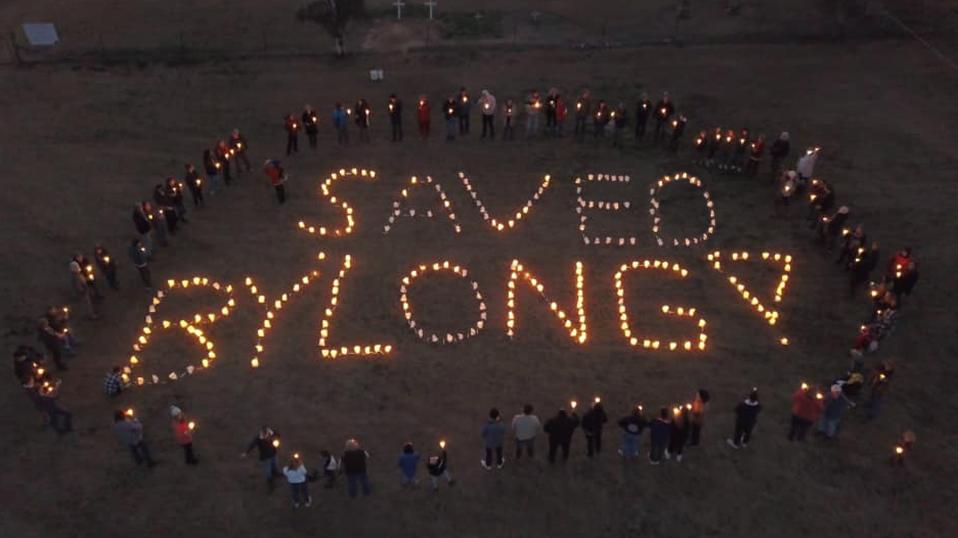
Bylong Valley Protection Alliance (Battle for Bylong) photo
Bylong Victory: Jubilation As NSW Independent Planning Commission Stops Damaging Coal Mine
September 18, 2019
Landholders and community groups have reacted with joy and relief after the Independent Planning Commission announced it had refused approval to a controversial coal mine in the secluded Bylong Valley, and have congratulated the NSW Government on letting the independent process run its course.
The Commission handed down its decision today and cited unacceptable impacts on groundwater, strategic agricultural land, and the heritage values of the Bylong Valley, as well as the mine’s impact on climate change and intergenerational equity.
Lock the Gate Alliance spokesperson Georgina Woods said, “This is the right decision from the Commission and it shows New South Wales is getting its priorities right, safeguarding strategic farmland and water resources from destruction and depletion for coal mining.
“We warmly congratulate the NSW Government on allowing this independent process to proceed to protect our precious land and water for the long-term.
“The Bylong Valley is a very special place, not just for the farmers that produce wool, beef, and fodder there, but for people around the state that recognise its extraordinary beauty and rich cultural and natural heritage.
“In a week when school children are preparing to strike from school for their future, we warmly welcome the Independent Planning Commission’s recognition that this coal mine would be contrary to the principle of intergenerational equity.
“It was the wrong place for a coal mine, and this is the wrong time for NSW to be opening up new areas for coal exploitation as the world shifts away from coal in a bid to halt global warming."
Bylong Valley landholder and sheep farmer Phill Kennedy said, “We’re over the moon that the Commission has made the right decision. This valley is hugely productive and stunningly beautiful.
“Thanks to this sensible decision, It’s going to keep producing food and wool for New South Wales for a long time to come.
“The productivity of the valley will also greatly increase when properties come back into private hands again, rather than those of KEPCO.”
Warwick Pearse from Bylong Valley Protection Alliance said, “We applaud the IPC - this is a wonderful decision. Bylong Valley will be safe from mining, and continue to be the productive and beautiful valley it has been for many years.”
“It underlines the need to actually give legal protection for prime agricultural land. This farmland should never have been put at risk in the first place.”
The IPC’s Statement of Reasons for refusing the mine is available here: https://www.ipcn.nsw.gov.au/resources/pac/media/files/pac/projects/2018/10/bylong-coal-project/determination/bylong-coal-project-ssd-6367--statement-of-reasons-for-decision.pdf
Lock the Gate Alliance welcomes reports today (September 19, 2019) from Korean news agencies suggesting KEPCO, which wanted to build a coal mine in the Bylong Valley, appears unlikely to make any appeal against the Independent Planning Commission’s decision yesterday to refuse the project.
The Korean Government owned company was quoted in major newspaper Hankyung saying, “although it is possible to challenge the IPC’s decision, it would be very difficult to change the outcome,” and that “KEPCO has not decided whether it would file an administrative action, resubmit the application, or entirely abandon the project,” in response to the decision.
It was also reported the company made an operating loss in the first has of 2019 approximated USD 775M.
Lock the Gate Alliance NSW spokesperson Georgina Woods said KEPCO’s avenues for appeal were extremely limited, in part due to the NSW Government’s attempts to stifle opportunities for local communities to challenge resource approvals in court.
“A narrow judicial review is the only kind of appeal available to KEPCO because the NSW Government routinely strips merits appeal rights for major resource projects to stop what the mining industry calls ‘lawfare,’ but which is actually a crucial balance we have long argued should be retained,” she said.
“In a judicial review, the Court can set aside a consent, but it would be referred back to the IPC to be decided again.”
Ms Woods said it was then likely the same decision would be made and it appeared KEPCO has reached the same conclusion.
“The Commission made a decision that protects strategic agricultural land and water resources from destruction and depletion for coal mining,” she said.
“It ruled that the proposal would have unacceptable impacts on groundwater, strategic agricultural land, and the heritage values of the Bylong Valley, as well as the mine’s impact on climate change and intergenerational equity.
“It’s hard to see how KEPCO, or any company for that matter, could build a coal mine in this incredible part of the world without creating these impacts so we would advise them to abandon the idea.”
Qld Govt Loses Bid To Overturn Orders Ending Lethal Shark Control Measures In Great Barrier Reef Marine Park
September 18, 2019
An application by the Queensland Department of Agriculture and Fisheries (QDAF) appealing the orders made by the Administrative Appeals Tribunal to end the lethal nature of the shark control program in the Great Barrier Reef Marine Park has been dismissed by the Federal Court this afternoon.
In April this year, following a legal challenge run by EDO NSW on behalf of the Humane Society International Australia (HSI), the Tribunal found that the Shark Control Program within the Marine Park must avoid the lethal take of shark species.
QDAF applied to the Federal Court to overturn the Tribunal’s decision. Today the Full Court of the Federal Court has dismissed the appeal.
“We’re delighted for our client HSI that this important decision stands,” said David Morris, CEO of Environmental Defenders Office NSW. “We were disappointed that the Queensland Government chose not to respect the decision of the impartial, independent umpire in this matter. The decision to appeal demonstrated an unwillingness to listen to the evidence and invest in ensuring that the Great Barrier Reef Marine Park Shark Control Program meets contemporary environmental standards”.
“The Administrative Appeals Tribunal found that there was overwhelming scientific evidence that the lethal component of the Shark Control Program does not reduce the risk of unprovoked shark interactions”.
“In light of the known environmental harm that this program causes to the World Heritage listed Great Barrier Reef, it is vital that the Queensland Shark Control Program catches up to the rest of the world and moves to a non-lethal program.
The Tribunal decision grants permission to the Great Barrier Reef Marine Park Authority for its Shark Control Program but requires it to:
- avoid the lethal take of sharks and remove the list of target sharks from the permit;
- ensure drum lines are attended to as quickly as possible when sharks are captured, and require that the euthanasia of sharks caught on drum lines is only undertaken on animal welfare grounds;
- ensure all tiger, bull and white sharks caught on drum lines are tagged then released so that their movements can be monitored and researched;
- ensure SMART (Shark Management Alert in Real Time) drum lines are trialled and implemented as soon as reasonably possible;
- conduct research into alternative non-lethal shark control measures; and
- require research to be conducted into the at-risk tiger shark population.
September Is Biodiversity Month
Biodiversity Month is held in September each year and aims to promote the importance of protecting, conserving and improving biodiversity both within Pittwater and Australia and across the world.
.
Our Readers have shown they value the magnificent native birds and animals we are so lucky to have living here, and many residents contribute to restoring local reserves and habitat through volunteer work as Bush Carers.
.
However, more Australian native species are headed for extinction. We already have the highest rate of mammal extinctions in the world… in fact, we’re the fourth worst for all animal extinctions globally. This month what can we all do as individuals to increase Pittwater's biodiversity and protect the original inhabitants?
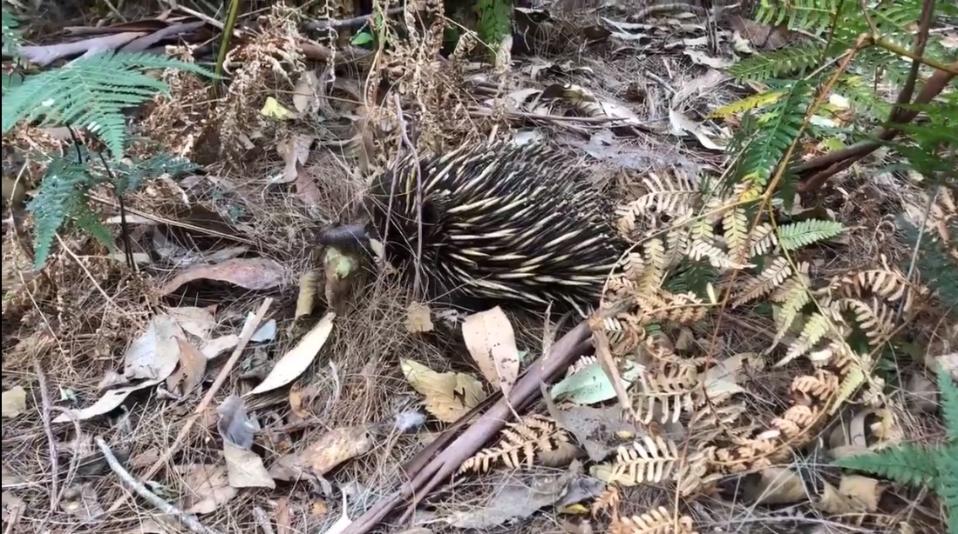
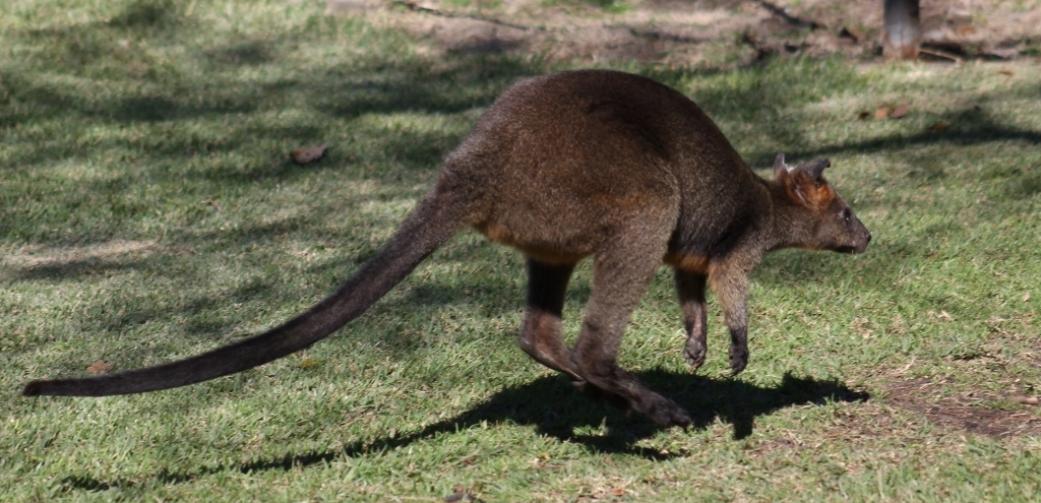
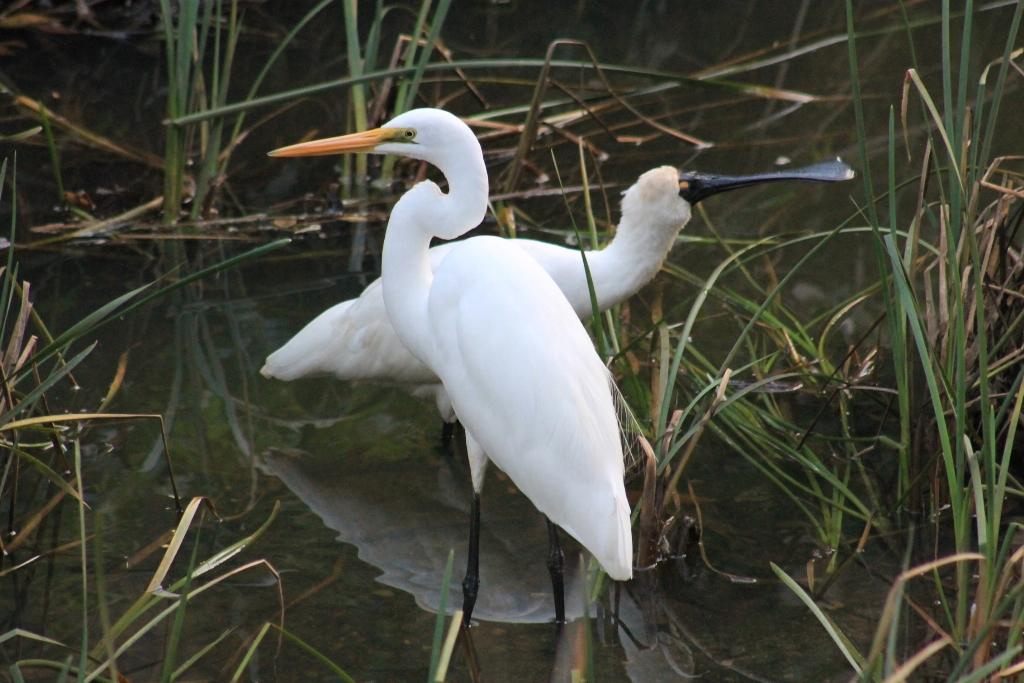
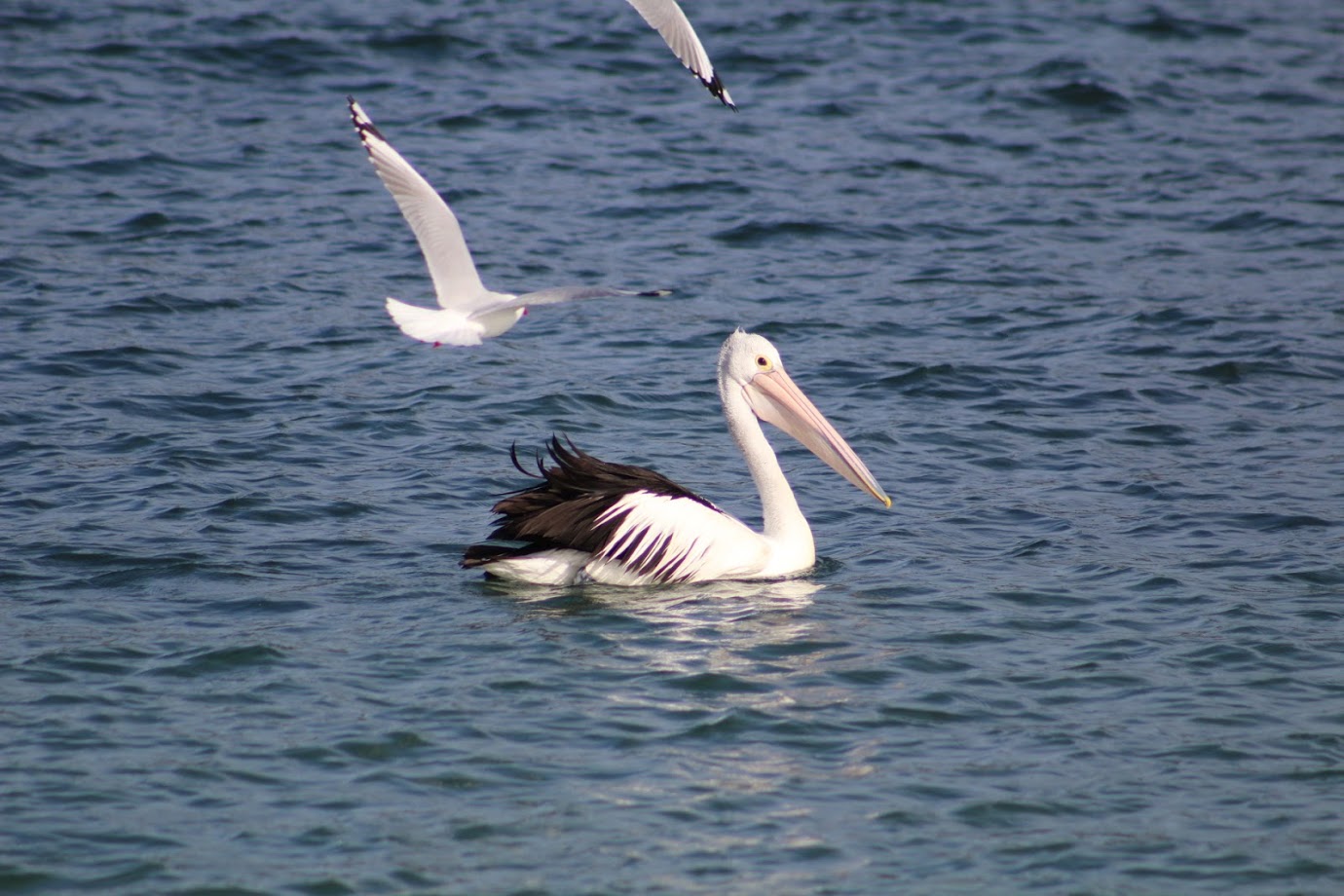
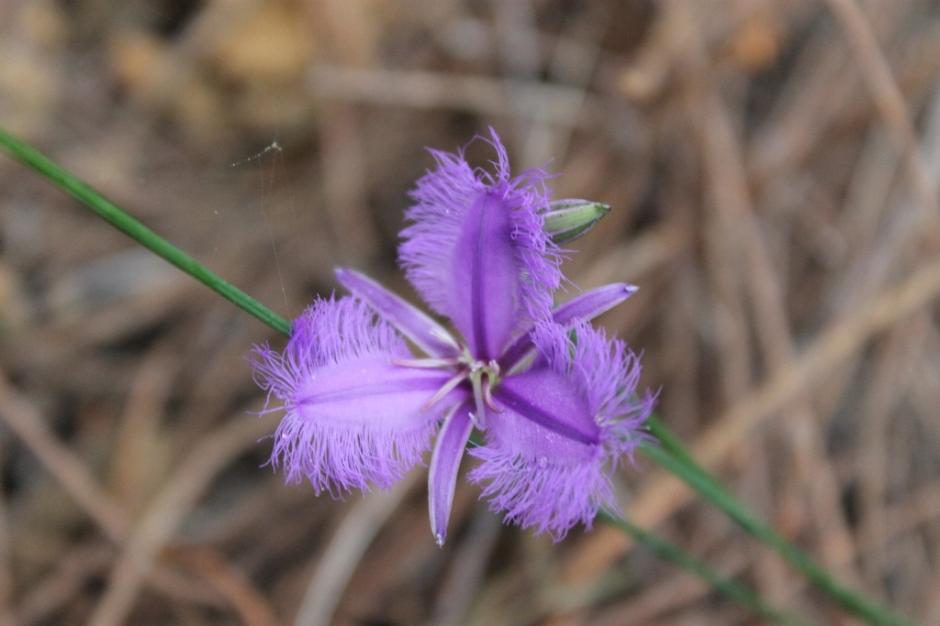
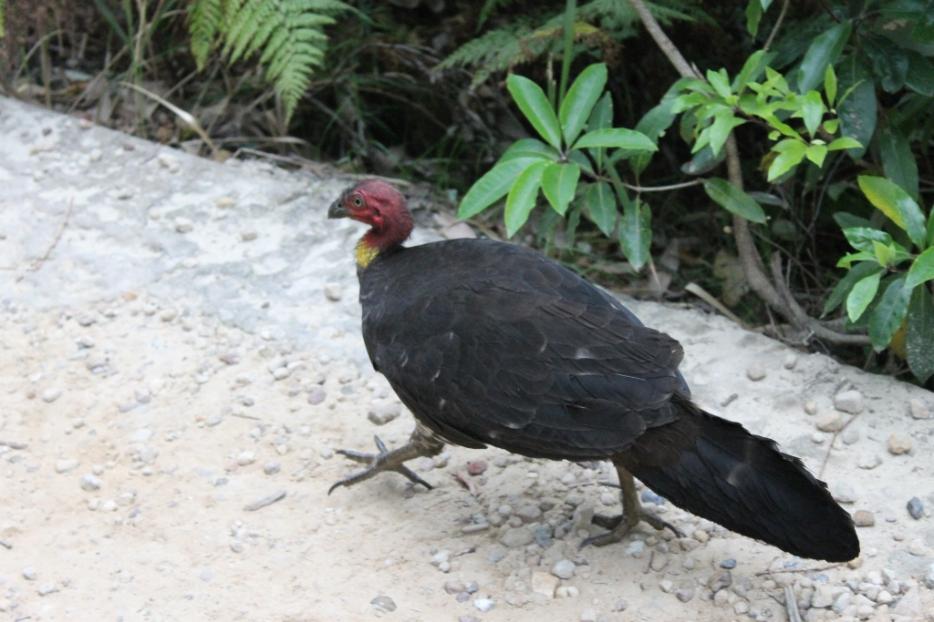
Photos: Echidna by Lynleigh Greig, Sydney Wildlife, Wallaby at Currawong by A J Guesdon, Egret and Spoonbill in Careel Creek by A J Guesdon, Pelican on Station Beach by A J Guesdon, Fringed Violet (Thysanotus tuberosus) and Bush Turkey (Alectura lathami) on Barrenjoey Headland by A J Guesdon.
Rethinking Scenario Logic For Climate Policy
September 18, 2019: International Institute for Applied Systems Analysis
Current scenarios used to inform climate policy have a weakness in that they typically focus on reaching specific climate goals in 2100 -- an approach which may encourage risky pathways that could have long-term negative effects. A new IIASA-led study presents a novel scenario framework that focuses on capping global warming at a maximum level with either temperature stabilization or reversal thereafter.
Scenarios can be seen as stories of possible futures that allow the description of factors that are difficult to quantify, such as those that influence the interconnected energy-economy-environment system. They are useful in terms of providing a way to explore how the future could evolve, and how today's decisions could affect longer-term systemic outcomes. The resulting information is commonly used by policymakers to inform decisions around issues like the measures we should take to limit global warming to well-below 2°C and preferably even 1.5°C relative to preindustrial levels, as stipulated in the Paris Agreement.
According to the authors of the study published in Nature, the vast majority of these scenarios, however, do not actually provide answers to these questions. They explain that while the scientific community has been creating scenarios that try to hit a climate target in 2100, they have been doing so without caring about how much warming we would be committing to over the coming decades, or whether that climate target was temporarily exceeded. This contrasts strongly with the near term climate change impacts and decisions policymakers and society actually care about. This dissonance became clear to the authors through their involvement as leading authors in the scientific assessments of the Intergovernmental Panel on Climate Change. The current approach has also resulted in a large literature of pathways that favor risky strategies with little emissions reductions in the near term, along with a strong reliance on CO2 removal in the second half in the century. In their study, the researchers resolve this issue and present a new scenario logic in which these important societal value judgments have to be explicitly decided on.
"Once we became aware that virtually all scenarios that are used to inform climate policy are biased towards risky pathways that for no good reason put a disproportionally large burden on younger generations, we started looking for a new logic that could resolve the issue. We were looking for a new way of designing long-term climate change mitigation scenarios that are more closely aligned with the intentions of the UN Paris Agreement on Climate Change," explains Joeri Rogelj, a senior researcher with the IIASA Energy Program and lead author of the study.
The study draws on insights from physical science to propose a new simple mitigation scenario framework that focuses on capping global warming at a specific maximum level with either temperature stabilization or reversal thereafter. It makes intergenerational trade-offs regarding the timing and stringency of mitigation action an explicit design criterion and provides a framework in which future CO2 removal deployment can be explored independently of variations in desired climate outcomes in light of social, technological, or ethical concerns. In this regard, the authors focus on three key issues: the time by which global CO2 emissions become net zero, the total amount of CO2 emitted until then, and the amount of CO2 that is annually removed from the atmosphere by human activities in the far future.
In terms of achieving net zero CO2 emissions, however, the authors note that this is not yet sufficient to meet the emission reduction requirements spelled out in the Paris Agreement, where a balance between sinks and sources of all greenhouse gases is required. The study's proposed scenario logic will allow modelers to translate geophysical and political science insights in a quantitative framework and defines how models that simulate the energy-economy-environment system can be used to determine climate change mitigation scenarios in line with current policy discussions. The staged design of the new scenario framework also allows researchers to explore mitigation investment decisions at various points in time, where choices at one time could influence the possibilities available at others.
"This new logic illustrates in a much clearer way how the choices we make as a society about emissions reductions in the next two to three decades determine the maximum level of warming, as well as our reliance on CO2 removal to return global warming to safer levels in the longer term. Interestingly, this logic also shows that once a transformation to a carbon neutral society is achieved, annual investments in the energy sector are pretty much equal to those expected for a world in which we didn't tackle climate change at all. Additional climate change mitigation investments thus play a role in the next decades, but don't have to be a continuous burden on future generations," concludes Rogelj.
Rogelj J, Huppmann D, Krey V, Riahi K, Clarke L, Gidden M, Nicholls Z, & Meinshausen M. A new scenario logic for the Paris Agreement long-term temperature goal. Nature, 2019 DOI: 10.1038/s41586-019-1541-4
Actions To Save Coral Reefs Could Benefit All Ecosystems
September 18, 2019: ARC Centre of Excellence for Coral Reef Studies
Scientists say bolder actions to protect coral reefs from the effects of global warming will benefit all ecosystems, including those on land.
In an article published in Nature today two researchers from the ARC Centre of Excellence for Coral Reef Studies at James Cook University (Coral CoE at JCU) say the world's reefs will disappear by 2070 if climate change continues on its current path. Even well-protected World Heritage-listed coral reefs have been increasingly damaged by regional and global bleaching since 1980.
Prof Tiffany Morrison and Prof Terry Hughes suggest a new, holistic approach to safeguarding coral reefs by focussing on land as well as the ocean.
"We must take a new, bolder approach to tackle the underlying causes of coral reef decline," lead author Prof Morrison said. "This means fixing the causes on a global, as well as local, scale -- both in the sea and on land."
As an example, to protect the Great Barrier Reef, Prof Morrison suggests policymakers in Australia should replace coal-fired power with renewable energy sources, develop land-based aquaculture, and restore or rehabilitate terrestrial vegetation and wetlands in the 425,000-square-kilometre catchment of the Great Barrier Reef.
"Done strategically, these actions can reduce global emissions, capture carbon, curb agricultural runoff onto coastal reefs while also enhancing people's livelihoods and food security," she said.
The Nature article argues that current approaches to coral reef conservation are failing as protecting local biodiversity on reefs and trying to restore damaged corals are the main focus.
"Current approaches to protect coral reefs are not enough to stem the ongoing decline," Prof Hughes said.
"Attempts to grow corals in aquaria or underwater nurseries are futile unless we address the major threats," he said.
"Reefs won't disappear if we tackle the root cause of their decline; global carbon emissions need to be slashed to 45% of 2010 levels by 2030."
The authors suggest that a bolder, scaled-up approach to the stewardship of land and sea -- focused initially on coral reefs -- could itself help society meet this goal.
Coral reefs cover only 0.5% of the ocean floor, but they support almost 30% of the world's marine fish species. 400 million people depend on reefs for work, food and protection from waves, storms and floods.
"What we're suggesting is not impossible," the authors said. "Countries such as Costa Rica, states such as California and cities such as Copenhagen have all taken up initiatives to curb greenhouse gas emissions and provide alternative economic opportunities that set powerful examples for the rest of the world."
The article urges scientists, policymakers, non-governmental organisations and philanthropists to develop similarly bold strategies to protect reefs, other ecosystems and people in a warming world.
Tiffany H. Morrison, Terry P. Hughes, W. Neil Adger, Katrina Brown, Jon Barnett, Maria Carmen Lemos. Save reefs to rescue all ecosystems. Nature, 2019; 573 (7774): 333 DOI: 10.1038/d41586-019-02737-8
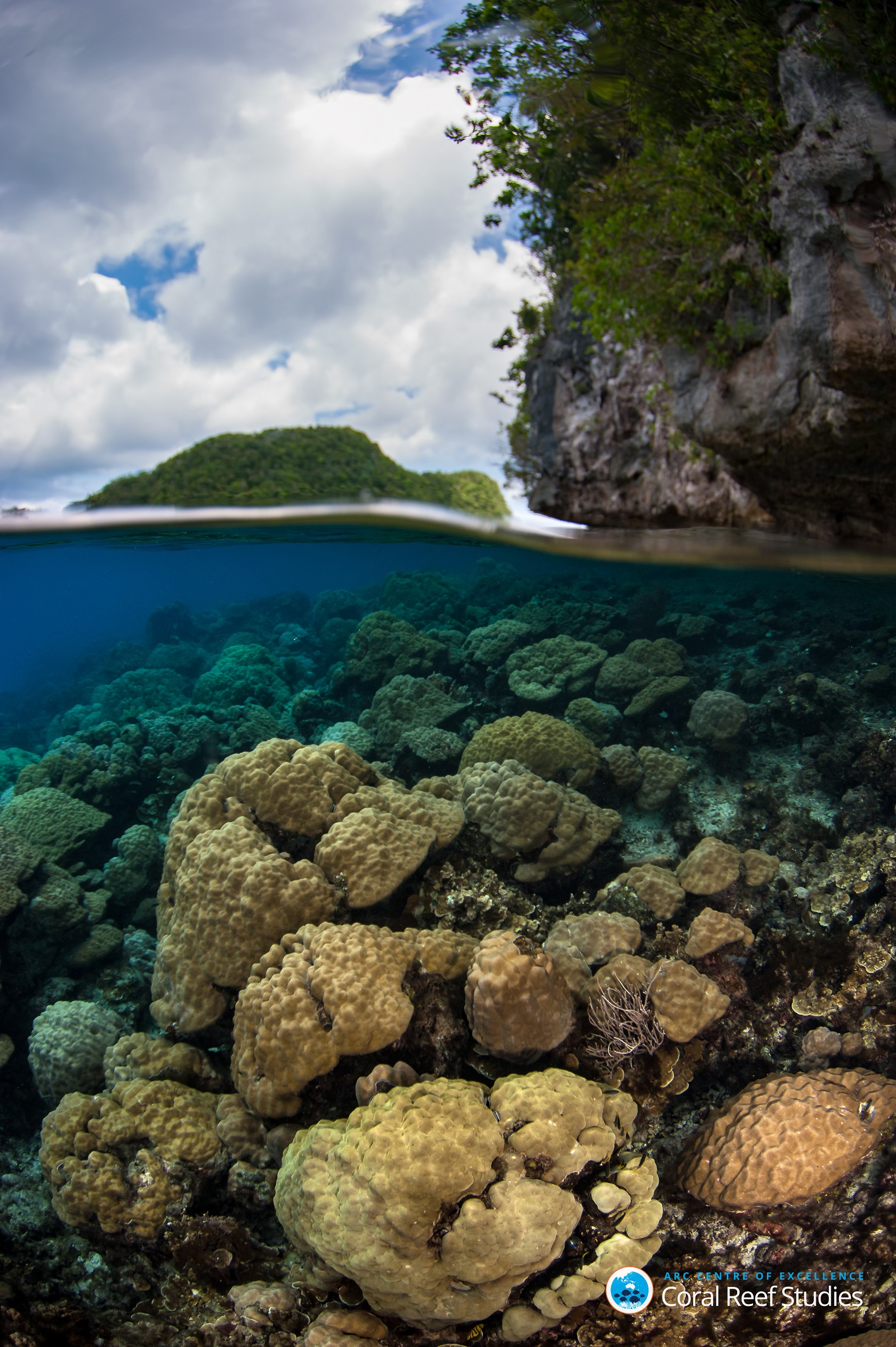
Ninety-one percent of reefs on the World Heritage-listed Great Barrier Reef bleached from thermal stress in 2016. Credit: Mark Priest
Shark Pups Lose Gains In Stressed Environments
September 17, 2019: ARC Centre of Excellence for Coral Reef Studies
A prominent JCU shark researcher is part of an international team that found shark babies can't reach their physical peak if they're born into environments degraded by human-induced stressors, including climate change.
Dr Jodie Rummer from the ARC Centre of Excellence for Coral Reef Studies at James Cook University (Coral CoE at JCU) is a co-author of a new study that compared the foraging and condition of two populations of newborn reef sharks: one in St Joseph atoll in Seychelles and the other in Moorea, French Polynesia.
"We found that although shark pups are born larger, heavier and better conditioned in Moorea, they soon lost their physical advantage over the pups in St Joseph," Dr Rummer said.
St Joseph is an uninhabited, remote and small atoll in the outer islands of Seychelles, where no environmental changes happened at the time of the study. However, Moorea is a popular tourist destination -- one that is still recovering from a loss of up to 95 percent of its live coral cover about five years before the four-year study commenced.
"At birth, newborn sharks receive extra fat reserves from their mother," said Ms Ornella Weideli, lead author from the Save Our Seas Foundation D'Arros Research Centre (SOSF-DRC) and PhD student at the Centre de Recherches Insulaires et Observatoire de l'Environnement (CRIOBE) in France.
"These energy reserves sustain them during the first days and weeks after birth," Ms Weideli said. "The 'energy boost' is important, as sharks are independent from their mothers from the moment they are born."
A total of 546 young sharks were captured and measured in that time. What they ate was also analysed. The study found the amount of energy reserves varied between locations.
"Bigger mothers give birth to bigger babies, which is what happens in Moorea," Dr Rummer said. "But that doesn't necessarily mean the babies will eat and grow quickly after that."
Instead, the bigger pups from Moorea soon lost their advantage in size, weight, and condition.
"Against our expectations, the larger pups from Moorea that received greater energy reserves started foraging for food later in life, which resulted in considerable declines in their body condition," Ms Weideli said.
"On the contrary, despite being smaller and lighter for their size, the pups from St Joseph started foraging for food earlier in life and became more successful predators than their Polynesian counterparts."
The authors think the bigger pups lost their physical advantage because Moorea was experiencing a degraded quality and quantity of prey, coupled with human-induced stressors such as over-fishing, climate change and coastal development.
This new study is crucial for informing critical shark nursery areas, sanctuaries, and marine protected areas.
The corals in Moorea bleached earlier this year during very hot temperatures after the completion of the study. Dr Rummer says the sharks in this area will now have an even more difficult time growing and surviving, as the conditions around them continue to degrade and water temperatures rise.
"Sharks are at risk from human-induced stressors because they may not be able to adapt fast enough to keep pace with the changes that are happening in their environment," Dr Rummer said.
"They are slow growers and take a long time to reach sexual maturity. When they do reach sexual maturity, they only have a few babies. Even fewer survive," she said.
"Not enough generations are being born fast enough to make the genetic changes to adapt to what's going on in their habitats."
"Mitigating human-induced stressors, especially during shark pupping season, is key to protecting these species and the ecosystems they support."
Ornella C. Weideli, Ian A. Bouyoucos, Yannis P. Papastamatiou, Gauthier Mescam, Jodie L. Rummer, Serge Planes. Same species, different prerequisites: investigating body condition and foraging success in young reef sharks between an atoll and an island system. Scientific Reports, 2019; 9 (1) DOI: 10.1038/s41598-019-49761-2

Jodie Rummer on a Moorea reef with shark. Photo Credit to Tom Vierus.
Aussie Bread Tags Collection Points
Collecting bread tags enables us to provide wheelchairs that change the life of disabled people in need, as well as keeping the tags out of landfill to help to preserve the environment.
Bread Tags for Wheelchairs was started in South Africa in 2006 by Mary Honeybun. It is a community program where individuals and organisations collect bread tags, which are sold to recyclers. The money raised pays for wheelchairs for the less fortunate which are purchased through a local pharmacy. Currently about 500kg of bread tags are collected a month in South Africa, funding 2-3 wheelchairs.
We have been collecting bread tags nationally in Australia since September 2018 and now have more than 100 collection points across the country. In February 2019 we started local recycling through Transmutation - Reduce, Reuse and Recycle in Robe, SA, where our tags are recycled into products such as door knobs and bowls. Tags from some states are still sent to South Africa where a plastics company called Zibo recycles them into seedling trays.
These humble bits of polystyrene can make a real difference so get your friends, family, school, workplace and church involved. Ask school tuck shops and boarding school kitchens, child care centres, aged care facilities, hospitals, cafes and fast food outlets to collect for you - they get through a lot of bread!
All the information and signage for collecting or setting up a public collection point is on our website.
Local Collectors
Lesley Flood
Warriewood
Please email for address - lespatflood@gmail.com
Jodie Streckeisen
Balgowlah
Please email for the address - streckeisenjodie@gmail.com

March Against The Central Coast Coal Mine 2 - WYONG
Saturday, October 26, 2019 at 2:30 PM – 4:30 PM
2 Hely St, Wyong
DID YOU KNOW THAT THE STATE LIBERAL GOVERNMENT APPROVED AN ENORMOUS SOUTH KOREAN GOVERNMENT-BACKED COAL MINE (WALLARAH 2) RIGHT IN THE MIDDLE OF THE CENTRAL COASTS WATER SUPPLY??
This will directly affect the following communities; the Yarramalong and Dooralong valleys, Blue Haven and Wyee areas, Olney State Forest and Jilliby State Conservation Area and have detrimental impacts on the broader landscape of our beautiful Central Coast.
Join us and March Against the Central Coast Coal Mine!!
> Saturday 26th October
> Time of Event: 2.30pm - 4.30pm
> Meeting point: Outside Wyong Council
‘March Against the Central Coast Coal Mine 2’ is our next peaceful demonstration march with the aim to raise awareness of the recently State Liberal Government approved enormous South Korean Government-backed Coal mine right in the middle of the Central Coasts water supply.
A coal mine that is only 5 minutes from Wyong and 20 minutes from Gosford - 28 years of non-stop destruction of our land, air, our water and our children's future.
Together with the community, we will be uniting outside Central Coast Council (2 Hely Street, Wyong) building at 2.30pm to hear a few great guest speakers, then to have a colourful and musical march against the Government's recent approval of the Wallarah 2 Coal Project.
Over 200 people joined the Erina march in July, which was just amazing. Lets double those numbers at this next event in Wyong! Please get sharing this event and spreading the news so we have a bigger, stronger community voice in Wyong protecting our land, water and wildlife. For more info, check out this short film from our last event outlining the situation: https://bit.ly/2TstQyr
Run by the passionate team from Coast Environmental Alliance (CEA)
There are 16 known endangered species, such as the yellow-bellied glider and the sheath-tailed bat, spotted tailed quoll as well as irreplaceable Aboriginal sites in the locality also.
This will be devastating to our area! So we must call on our official State representative, Adam Crouch, to stand up with us, and represent the people he swore an oath to serve, and call on the Liberal Government to stop this mine from going ahead.
While the Government has suggested that the risk to our water supply is minimal, ANY risk of contaminating our water supply is totally unacceptable.
The Liberal Government knows full well there is a risk to our water, that is why they have PROMISED to stop it in the past. Then as soon as elected, they approved it.
••••• Why meet outside Central Coast Council at Wyong? •••••
Historically, Council has been supportive of stopping the Central Coast Coal mine, but since the recent approval of the mine, have done nothing to draw attention to the issue through the media.
We need our local elected leaders to publically call on the State Government to stop this from going ahead.
Right now is an absolutely critical time where we really need our local Councillors and other politicians to publicly stand up and support the community.
Also, it's a good location for the gathering. Only 5 minutes from where the proposed mine will be located.
••••• Why on a Saturday? •••••
Our last March was on a Friday afternoon during work hours. We did this so we could draw attention to the issue in peak-hour traffic. And we certainly accomplished that.
We have made this event on a Saturday so hopefully more people can attend (due to not having to work) so we can build on our numbers from last time.
••••• What is the purpose of a second rally? •••••
Our first rally was great! But unfortunately it was largely ignored by the mainstream media.
We need to build our numbers to a point where this issue can no longer be ignored by the media or our elected leaders.
••••• Who should attend?•••••
Anyone who believes that our community is entitled to breathing clean air, drinking clean water and maintaining a healthy environment in the place we are so privileged to call home.
** Event Details **
When: Saturday 26th October
Time: 2.30pm -4.30pm
Meeting: Central Coast Council, Wyong Office (2 Hely Street, Wyong)
March: Led by drummers, musicians and colourful members of the community we will march to the main road to stand up for the Land of the Central Coast.
Guest speakers from local environmental groups will be at this event to share ways we can get involved in helping to stop Wallarah 2 and what action we have taken to date.
Get creative! Dress up, bring your instruments and your furry friends and the whole family - Lets UNITE to show that PEOPLE POWER is much stronger than the 'people in power'!
Lets make this fun and creative through different forms of expression. Dress in colour, bring musical instruments, and let us come together in solidarity for our precious and unique local environment.
Some ideas for signs that are relevant could include wording such as:
"Save Our Water!"
"Protect our land, water and air”
"Stand up for our wildlife”
"Say NO to Wallarah 2"
This event will go ahead RAIN, HAIL OR SHINE.
PLEASE SHARE THIS EVENT FAR AND WIDE FOR WE NEED MANY VOICES TO CREATE ONE POWERFUL VOICE
*** SOME DISTURBING FACTS ABOUT THE W2CP ***
• 68 percent of the water from this catchment supplies drinking water to the whole Central Coast and will be at serious risk of contamination from the mine
• Round the clock noise, light pollution at night, air and dust pollution from trucks, machinary, railway and traffic
• Extraction of up to 5 Million tonnes of thermal coal per year
• The total greenhouse gas emissions over the life of the mine will be over 264 million tonnes of CO2
• The Jilliby SCA alone provides critical habitat for over 150 native animal species, including 16 threatened species and more than 130 species of birds
• Jilliby is an important cultural and historical area for Aboriginal people. There are more than 40 recorded Aboriginal sites in Jilliby, and the adjacent Watagans National Park also includes art sites, axe-grinding grooves and open campsites.
• Subsidence of up to 2.6 metres beneath a state forest area; increased flooding impacts for more than 170 property owners that could require lifting or relocating homes and increased flooding impacts affecting 15 bridges and roads
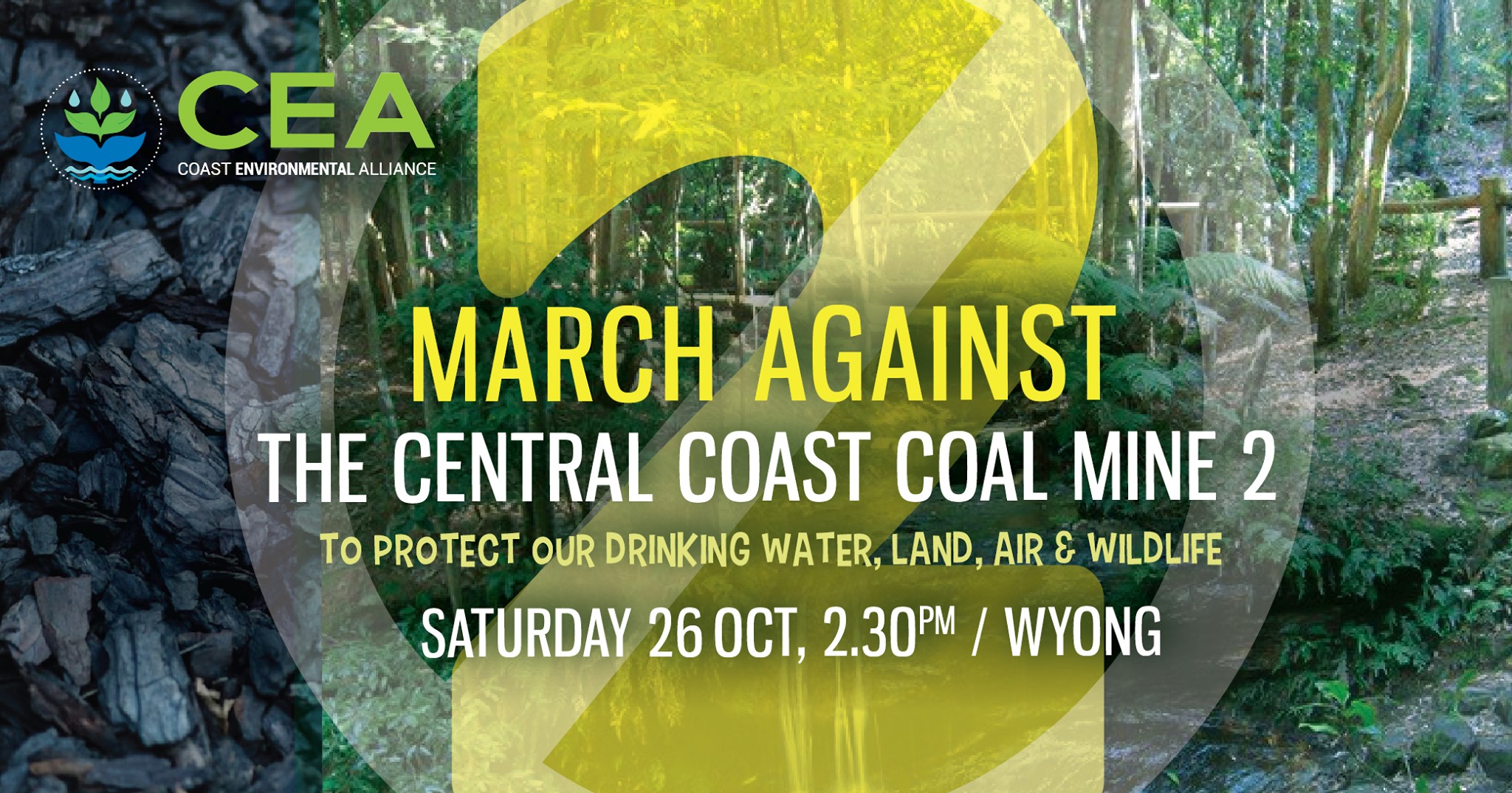
Barrenjoey Seal Colony Growing
Jools Farrell, local ORRCA member, reminds us that at present the Australian Fur Seal Colony at Barrenjoey is growing. In mid July there were 9 but there will be a lot more as we had up to 20 last year.
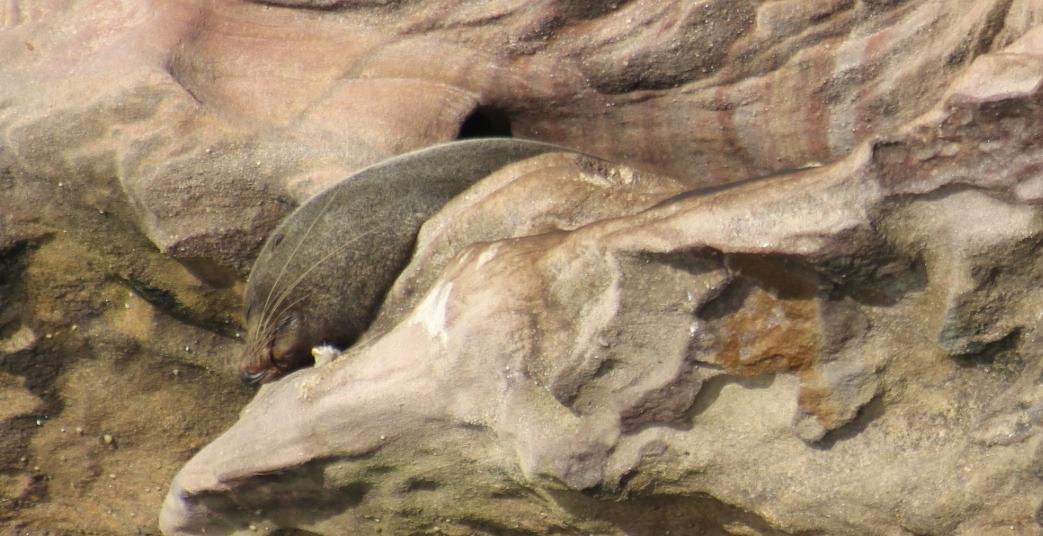
Please remember that legally you must stay a minimum of 40 metres away from seals, especially if they come ashore on the estuary beaches or ocean beaches to rest.
Also please keep an eye out for them if you are out in a boat as they do venture out of this spot to feed on the estuary or around Barrenjoey Headland. In recent years they have been seen everywhere from Barrenjoey to Clareville and Church Point.
Please do not attempt to feed them as they get plenty of food here in Pittwater. Please also do not attempt to swim with them, Jools asks.
If you do see a seal in distress, please contact ORRCA on their 24/7 hotline: 9415 3333.
Archie's Pittwater Clean Up
My name is Archie Mandin
I am a Seabin Ambassador, I started this campaign because I want to take a stand against ocean plastics!
My goal is to raise enough money to bring a minimum of 20 Seabins to Pittwater NSW as I want to give The Northern Beaches the opportunity to reduce its plastic pollution impact on the ocean. Its amazing how much accidental rubbish comes down our creeks and into our waterways
I need your help to raise money to buy the Seabins a revolutionary ocean cleaning technology which is essentially a floating rubbish bin that operates 24/7 catching all floating debris in the water.
The Seabin helps clean the ocean of floating debris which in turn creates cleaner oceans and we all benefit from this in one way or another. I mean, who really wants to swim in pollution? Not me that’s for sure!
Did you know that 300 million tons of plastic are produced in the world every year, half of which is for single use products, from this more than 8 million tons of plastic is dumped into our oceans every year. We need to do something about it and now with the purchase of a Seabin we can all participate and make a difference!
Join me and my campaign to help ensure cleaner oceans!
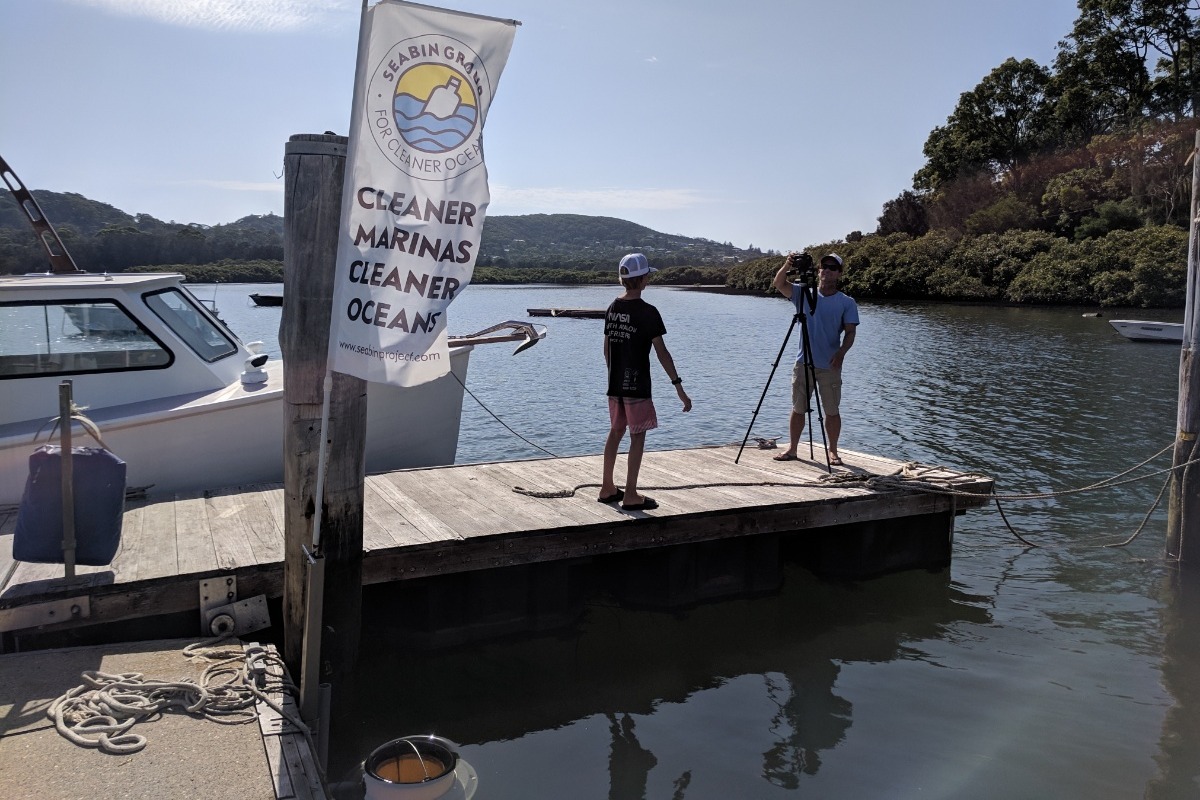
What’s a Seabin?
The Seabin is a floating rubbish bin that is located in the water at marinas, docks, yacht clubs and commercial ports.
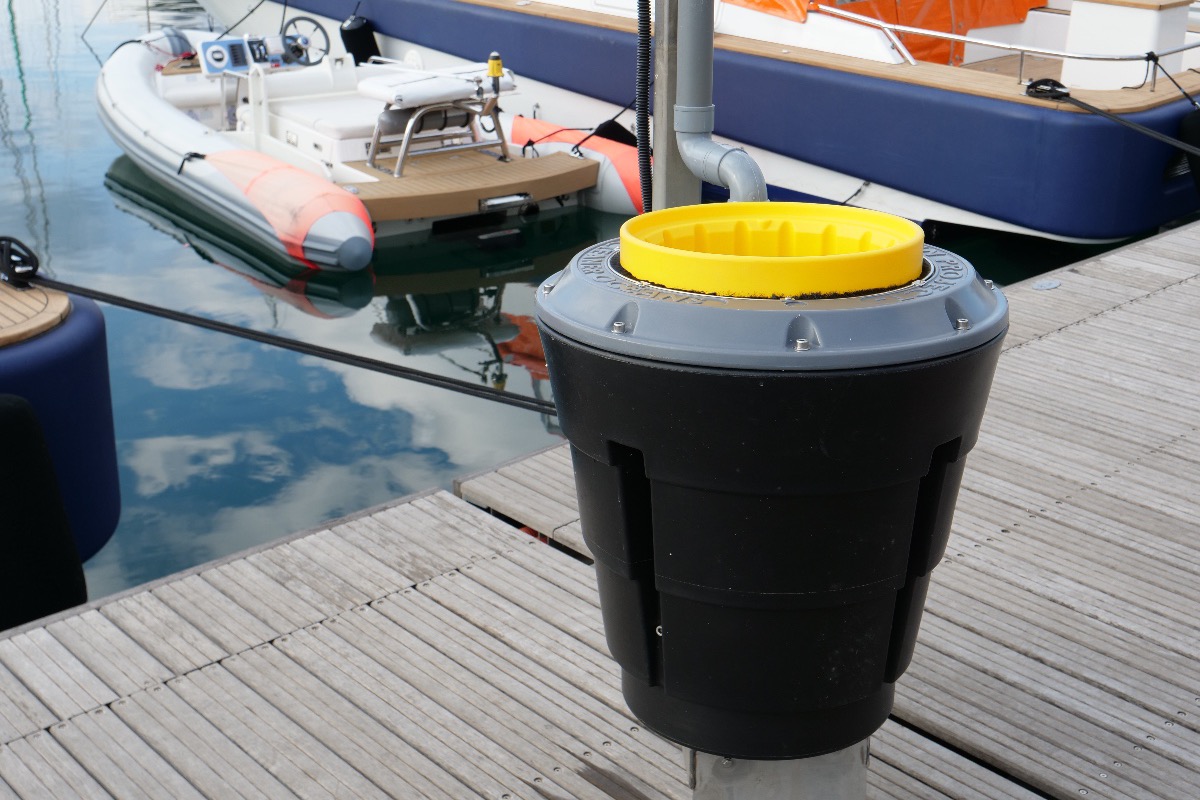
The Seabin can catch an average of 3.9kgs of floating debris per day which adds up to 1.4 tons per year. (depending on weather conditions and debris volumes) The Seabins is catching large plastic bags, bottles, plastic straws, coffee cups, food wrappers, surface oils and micro plastics down to 2 mm small.
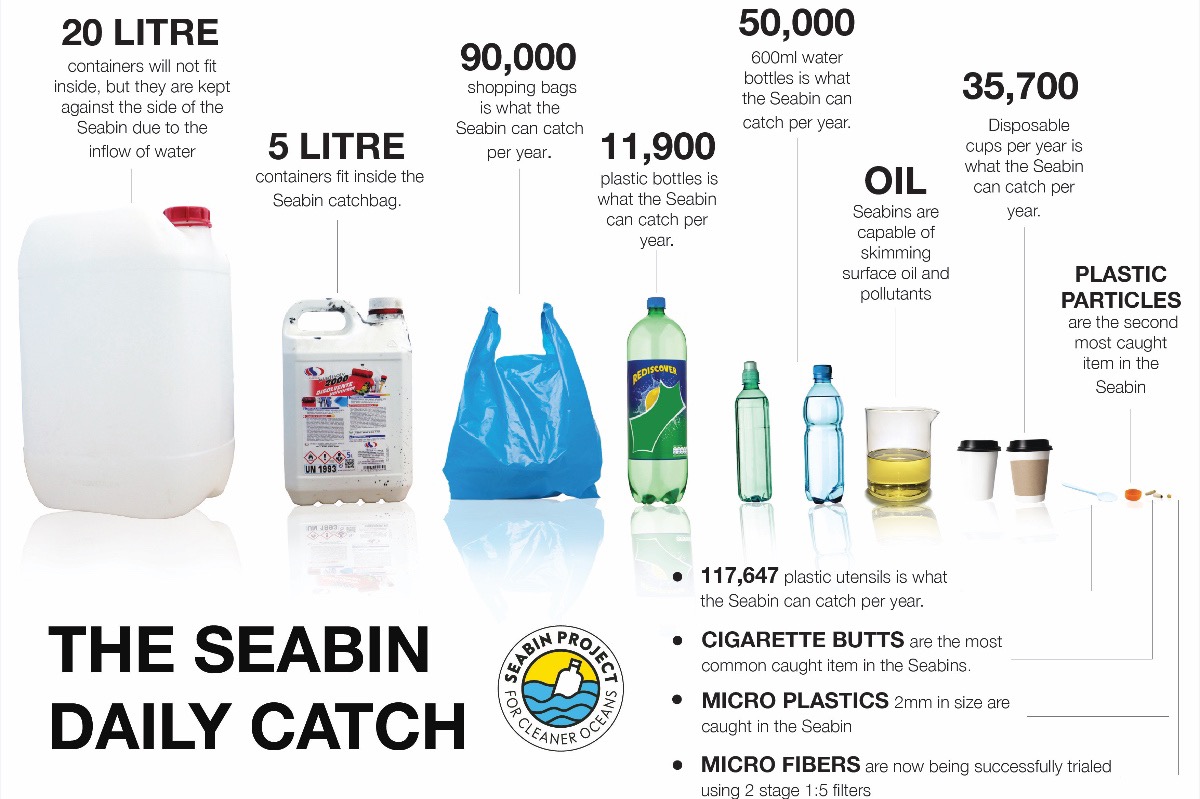
How can a Seabin contribute to cleaner oceans?
The Seabin contributes to cleaner oceans by removing 1.4 tons of floating debris per unit per year. The location of the Seabin in marinas is ideal and where it matters most, close to the source of entry for floating debris. Ports and Marinas are perfect locations to stop floating debris from entering the open ocean and ocean plastics are also brought in by wind and currents.
Are the Seabins a danger to marine life?
The fish According to the team at Seabin, stay away from the surface of the water where the Seabin sucks in the water. They are deterred by the force of the water current. If there are swarms of jellyfish or bait fish it is recommended that the Seabins are turned off until the swarms pass. If a fish was to accidentally go into the Seabin, it would be caught in the Seabin and stay submerged in water until the marina staff retrieve the filter and throw the fish still alive back into the water.
How does it work?
Water is sucked in from the surface and passes through a catch bag inside the Seabin, with a submersible water pump capable of displacing 25.000 LPH (liters per hour). The water is then pumped back into the marina leaving litter and debris trapped in the catch bag to be disposed of properly.
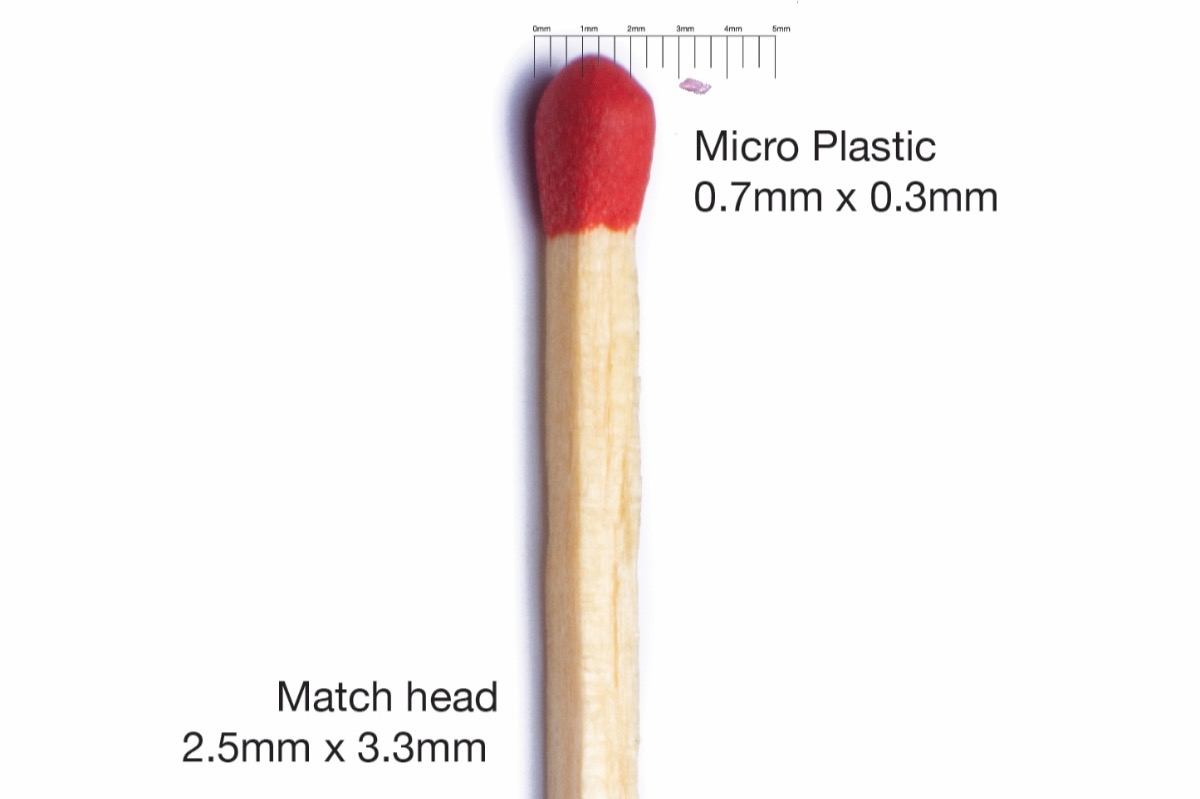
Who is responsible for the Seabin?
This is the best part of it all, the marina will be the one responsible for the upkeep of the Seabins and also they will be paying for the energy consumption of the Seabin which is around $2 - $3 a day.
The marina enjoys a cleaner marina and the rest of us and the marine life enjoy cleaner oceans with less floating debris polluting our oceans!
Seabins part of a whole solution
Seabins whole solution is Technology, Education, Science, Research and Community. The reason for this is that Technology alone is not the solution to stopping ocean plastics, education is the real solution.

Great! Can our local community be involved also?
Yes! The team at Seabin have interactive programs and lessons designed for schools, community and youth to interact with the Seabins and have over 2000 school students engaged around the world, this is something that we can do locally also with support from the team at Seabin Project.
What will we be doing if we participate in these programs?
You would be joining an international community contributing important data and feedback on ocean plastics to the Seabin central data base. Renowned scientists, universities and environmental agencies are all a part of the programs also.
The lessons range from identifying ocean plastics to data collection of what the Seabins are catching weekly. The data collection is a very easy activity and where we can all see the measurable impact of debris the Seabins are taking out of the water in all weather conditions.
It’s as simple as counting how many plastic bags, plastic particles, food wrappers and then noting it down on a spreadsheet or app. Weather conditions and location information is also entered into the data base.
How can you help our campaign and make a difference in the world?
Every contribution to this crowdfunding campaign helps, be it $1 or $50 dollars, it all adds up and bring us closer to our goal.
Even if you cannot afford a donation, please help by sharing this campaign with your friends and family on social media. The more people that know about the campaign the better!
Thanks everyone for taking the time to check out our campaign!
FOR CLEANER OCEANS!
Archie
FAQS SHEET
Seabin Project FAQs
Q: Can someone pay out the crowdfunding campaign goal?
A: Yes! We need help! The more money we can raise, the more Seabins we can buy.
Q: Why crowdfund a Seabin?
A: Until now, the Seabins were not for the everyday person to purchase because marinas ports and yacht clubs are the target market for Seabin Group. This is a way where everyday people can give something back to the oceans.
Q: How do Seabins work in tidal areas?
A: Seabins at present are designed for floating docks and pontoons. The Seabins move up and down with the tide on the floating dock.
Q. How are the pumps run?
A. The pumps are currently electric, and around $2-$3 a day to run.
Q: When are the Seabins available?
A: Depending on your countries location, Seabins will be available Feb 2019.
Q: Do any fish get sucked into the Seabins? What about smaller marine life?
A: There is a possibility of fish to enter the Seabins, however in the last 2 years of development, the Seabins have only caught a handful of small bait fish. Most of which have been thrown back into the water alive. The fish simply stay away from the flow of water entering the Seabin and with the current fine tuning of the Seabin, the risk is now minimal.
Q: I don’t have any money to donate, how can I help?
A: Don’t worry! Your amazing anyways and thanks for even contacting us. We need help to share this project around with any media we can. Social media platforms like Facebook, Instagram, Twitter, websites, bloggers. Also with newspapers, magazines, tv, radio and journalists. Also friends and family!

Mrs. Hawkins Local Horse History Spoken By Peggy Brown
Published September 17, 2019 by Pittwater Pathways
Newport and Mona Vale girls on their ponies ca 1950s and 1960s.
2:20 Pat Lovell and Brownie, Robyn Seelenmyer and Cherry, Marion Hennessy and Toby, Clare Campbell and Rema, Rosemary Friar and piebald. Bungan Head Road to Winererremy Bay on horseback.
4:00 Blacksmith Mr Hawkins at Winererremy Bay shoes a horse. Warriewood glasshouses, Warriewood waterfall and bogey hole, 1950s Polo Club, Nullaburra Road Newport, the oval at Palm Road.
8:00 1960s Brookvale Show street parade Dee Why. Various marching groups, Majorettes, Warringah Shire float, Howells Holdens, school children, Mounted Police, Smokey Dawson on 'Flash'.
11:00 Brookvale Show horse events, show jumping, trotters racing.
11:30 Smokey Dawson Rodeo, Cobb & Co coach from 'Whiplash'
Full Moon Market Full Version
Published September 17, 2019 by Barrenjoey High School
Video put together by Sally Mayman.
Why Would Anyone Shiver Their Timbers? Here’s How Pirate Words Arrr Preserving Old Language
September 19, 2019
by Kate Burridge, Professor of Linguistics, Monash University and Howard Manns, Lecturer in Linguistics, Monash University
There’s no shortage of special days throughout the year. Some — like International Literacy Day — speak to important issues in society. Others speak to our inner dag.
Today marks one of the daggier days, International Talk Like a Pirate Day. It marks the occasion when Americans John Baur (aka Ol’ Chumbucket) and Mark Summers (aka Cap’n Slappy) first proclaimed in 1995 that everyone in the world should talk like a pirate.
And so we thought we’d take the chance to answer a few pirate questions. Why do pirates say “arr”? What are timbers — and what happens when they get shivered?
Let’s get underway me language-loving ‘earties.
Who put the ‘arrr’ in pirate?
The modern-day fiction of pirate-speak emerged from pirate-themed amusement rides, books and films, especially the Disney classics like Treasure Island, the Pirates of the Caribbean series — and of course Australia’s own Captain Feathersword of the Wiggles fame.
The signature pirate voice is West Country (or some version of it). But why West Country?
True, south-western England produced well-known pirates like “Black Sam” Bellamy and “Long Ben” Every, but famous pirates came from all over. Captain Kidd hailed from Scotland, Black Bart from Wales, William Burke from Ireland and Edward “Ned” Low from London.
But it was Dorset-born Robert Newton – acclaimed actor and patron saint of Talk Like A Pirate Day – who set the fashion for pirate-speak. His portrayal of Long John Silver and Blackbeard in 1950s films set the gold standard for pirate voices on the screen – including the “arr”.
Together with the skull-and-crossbones logo, this accent built the pirate brand.
How pirate-speak preserves language
The books and movies that launched the pirate brand all those years ago have acted like artificial life support systems for expressions that otherwise would have long bitten dust.
Making many regular appearances on September 19 are expletives like “timbers”, “shiver me timbers” and “sash me timbers” – all nautical exclamations from the late 18th century.
Timber was a slang term for “wooden leg” (“timber toe” meant “man with a wooden leg”). It was also a nautical expression for the pieces of wood making up the ribs or frames of a ship’s hull. The term “shiver” meant “to splinter” (by happy coincidence, English has another verb “shiver” with equally appropriate “quiver, tremble” senses).
There was undoubtedly a bit of word play going on with these mock oaths — the idea being something like “may my wooden leg (or ship) fly into small pieces!”. They are modelled along the lines of frightful curses like “Gorblimey” (a truncated version of “May God blind me”) and “Drat” or “Rats” (innocent sounding expressions until you realise they’re disguised forms of “God rot them”).

Acclaimed actor Robert Newton built the pirate brand in films like Treasure Island and Black Beard. IMDb
Like “(God) strike me dead” and “blow me down”, shiver me timbers was rare by the mid 1800s and is never encountered these days – except on September 19.
We see a similar pirate-specific support of nautical terms like “hearty” and “lubber”. When pirates say “me hearties”, they’re giving due respect to a person for bravery or other admirable qualities. “Hearty” was even another word for “sailor” from the 18th to the early 20th century.
“Lubber” has been around since the 14th century and referred to a clumsy and idle person. In fact, before becoming part of sailor parlance, people spoke scathingly of the “abbey-lubber” (monks living in idleness or self-indulgence).
And from the 16th to the 19th centuries, we see the “lifting” hearties speaking of the “leaning” lubbers, especially those land-lubbers.
Tracing sea lingo from travel logs to sluiced gobs
Our knowledge of sea-faring lingo comes from early manuals like seamanship writer Samuel Sturmy’s Compleat Mariner (1669). Some of this nautical jargon made it into ordinary language and survived — “by and large”, “taken aback”, “underway” and “go by the board”.
The so-called golden age of piracy (late 17th and early 18th centuries) happened to coincide with the golden age of travel literature, and it became the fashion of the time for writers to pepper their memoirs and travelogues with nautical words. This was so much the case that philosopher George Campbell described the practice as a “source of darkness in composing”.

The Capture of the Pirate Blackbeard, 1718 by Jean Leon Gerome Ferris. Blackbeard is one of the world’s most famous pirates. But did he really say ‘arrr’? Wikimedia commons, CC BY
Early slang dictionaries are another source of “tar phrases”, tar being an early appellation for a sailor. Early lexicographer Captain Francis Grose’s Dictionary of the Vulgar Tongue groans with 18th century nautical gems like “shipshape” (orderly), “junk” (pieces of old rope and, later, “pieces of salted pork”), and lashings of terms for food and drink — “belly timber”, “slush and tack” (food), “grub-spoiler” (cook), “flash the hash” (to vomit), “grog” (rum and water), “sluice the gob” (to drink) are some of the success stories.
Those who see scruffy slang as a shortcoming of modern times might be surprised to encounter in Grose’s dictionary entries like “Vice Admiral of the Narrow Seas”, which he defines as “a drunken man that pisses under the table into his companions’ shoes”.
In fact, many current terms around drunkenness hail from this time: “slewed”, “(well) spliced”, “listing to starboard”, “three sheets to the wind”, “legless”, “keel over” and “guzzle-guts” (“one greedy of liquor”). Even the phrase “name your poison” as an invitation to drink was early sailing slang. It seems the expression “drunk as a sailor” is well founded.
So go ahead and enjoy International Talk Like a Pirate Day. It’s the one day when all around the English-speaking world, you can hear “shiver me timbers” and a flourishing of picaroon “arrrs”!
And if our short introduction has whet your appetite, check out the talk like a pirate website or use a pirate translator. These ‘ere translatin’ contrivances be fer turnin’ decent English into the lingo of sea-dogs. At this point we’ll sling our hook…
This Article was originally published in The Conversation, republished under a Creative Commons licence.
Stop Calling Young People Apathetic. For Many, Volunteering And Activism Go Hand-In-Hand
September 19, 2019
by Lucas Walsh, Professor, Education Policy and Practice, Youth Studies in the Faculty of Education. Latest books with Rosalyn Black include "Imagining Youth Futures: University Students in Post-Truth Times" and "Rethinking Youth Citizenship after the Age of Entitlement", Monash University
Senator Jacqui Lambie has proposed establishing a Senate inquiry to increase the number of volunteers to address challenges such as climate emergencies.
One way she suggests doing this is by conscripting young Australians to national emergency service. The Senator argues that
today’s generation don’t really want to volunteer themselves and commit to certain things. They want to show up to a rally once a year and apparently that’s giving back … It bothers me that kids today wouldn’t know a bloody sandbag, let alone a spade.
Her proposal comes on the back of criticism of youth climate protesters by several prominent politicians, such as Resources Minister Matt Canavan, who has said
the best thing you’ll learn about going to a protest is how to join the dole queue.
Young people are already volunteering
Collectively, these statements reflect a view of young people that is wildly inaccurate.
Firstly, Lambie echoes a familiar but negative view of young people as disengaged, indifferent and immature.
Volunteering rates are indeed declining. In 2014, volunteering declined for the first time since 1995, when the ABS started conducting national voluntary work surveys. The proportion of people aged 18 years and over who were volunteering fell from a peak of 36% in 2010 to 31% in 2014. (This is the most recent data available).
Read more: On an average day, only 1% of Australian news stories quoted a young person. No wonder so few trust the media
Historically, younger people are less likely to engage in civic activities than older Australians. But wider research during the last decade suggests something more nuanced.
A national youth survey in 2018 found volunteering to be one of the top three activities for young people – ahead of arts, culture and music activities. ABS figures from 2014 also showed that while overall rates of volunteering were on the decline, young people aged 15-17 had the highest rate in the nation at 42%.
The measures used to track volunteering also fail to capture the breadth and depth of volunteering that takes place among young people.
The ABS has defined volunteering as
the provision of unpaid help willingly undertaken in the form of time, service or skills, to an organisation or group, excluding work done overseas.
For young people, many types of volunteering take place invisibly through online activities like constructing news groups on Facebook that contribute to a wider cause. Such online activities may not be for a particular organisation or group and may be conducted internationally.
In addition, the boundaries between personal and civic contributions are sometimes blurred. For example, volunteering in some culturally and linguistically diverse communities is just part of life, and not considered to be volunteering.
Similarly, research has shown that some young people don’t necessarily think of activities such as umpiring a local sporting event as volunteering, because for them it is just an interesting pursuit.
As a result, these contributions by young people sometimes go unrecognised.
Acknowledging that its definition does not account for informal volunteering like this and other activities such as activism, the ABS is now seeking to capture
a broader range of volunteering activity and characteristics.
Protesting is an equally valid way of giving back
Young people are also increasingly motivated to take part in another form of civic participation: peaceful protest. For many, protesting for important causes is considered an equally valid way to give back to society.
The most prominent example of this are the student climate strikes around the world that have been galvanised by youth activist Greta Thunberg. Thousands of Australians students are expected to walk out of their classes again on Friday.
Jonas Kampus, a 17-year-old protester from Switzerland, described the importance of these efforts to the Guardian:
For people under 18 in most countries, the only democratic right we have is to demonstrate. We don’t have representation.
Canavan has a different view, saying that young people “don’t learn anything” from leaving school to protest.
But experiential learning through activism can be powerful and connect people to finding common solutions. Education isn’t just about securing future jobs, as Canavan has suggested. It’s also about developing inquisitive, creative and critical thinkers who fully participate in society.
Young people throughout the world are demonstrating these attributes and participating in ways that do not register in conventional measures. Many are actively engaging the challenges facing our society and are acutely aware of the value of education.
There is another important connection between protesting and volunteerism. One international study has found that
people involved in voluntary associations are up to five times more likely to make political demands than those without such membership.
University of the South Pacific researcher Jacob Mwathi Mati and his colleagues argue that activist movements can serve as “schools of democracy that teach civic skills and foster civic attitudes.” Taking part in climate change protests, for example, can build capacity for citizen engagement in the same way as more traditional forms of volunteering.
The great majority of politicians are hardworking and dedicated to making a difference in society, and painting them with broad-brush criticisms that reinforce negative stereotypes does not do them justice.
It’s equally unfair to reduce young people to passive and clueless individuals in need of compulsory volunteer conscription.
This Article was originally published in The Conversation, republished under a Creative Commons licence.
Gutsy Effort To Produce Comprehensive Study Of Intestinal Gases
September 16, 2019: University of New South Wales
A source of embarrassment to some, or pure comedy to others, flatulence and the gases of the intestines are increasingly seen as playing an important role in our digestive health.
A paper led by UNSW Sydney and published in Nature Reviews Gastroenterology & Hepatology has examined all available literature on gastrointestinal gases, their interactions with the microbiome of the gut, their associated disorders and the way that they can be measured and analysed.
Lead author Professor Kourosh Kalantar-Zadeh, who is an ARC Laureate Fellow with UNSW's School of Chemical Engineering, says the purpose of the study is to lift the lid on the various gases of the gut and show how vital they are for human health.
"This is about providing knowledge to people about the importance of gases in the gut," he says.
"Rather than laughing about it or feeling embarrassed about this subject, actually there is good reason to take this very seriously.
"Even Benjamin Franklin wrote about this more than 200 years ago. He was one of the first to propose that different types of foods have different effects on our gut health, which can be measured by smelling the resulting farts -- although I'm not so sure about his methods."
Indeed, Franklin wrote a letter to the Royal Academy of Brussels where he proposed "To discover some Drug wholesome & not disagreable, to be mix'd with our common Food, or Sauces, that shall render the natural Discharges of Wind from our Bodies, not only inoffensive, but agreable as Perfumes."
While Franklin's challenge continues to elude modern pharmacology, a change of diet to avoid foods rich in sulphide -- such as broccoli, cauliflower, eggs, beef, and garlic -- could reduce the malodorous nature of our gaseous emissions.
Gas profiles
In the paper published today, the authors examine each of the main gases that are found in the gastrointestinal system.
"Interestingly, the gases in most abundance throughout the digestive system -- nitrogen, oxygen, carbon dioxide, hydrogen and even methane -- are odourless," Professor Kalantar-zadeh says.
By contrast, smelly sulphide compound gases exist in trace amounts in the colon. Nitrogen and oxygen end up in the gut by being swallowed and carbon dioxide can be chemically produced in the stomach.
"The rest are mostly by-products of the microbiome -- the colonies of bacteria living in our intestines -- as they break down carbohydrates, fats and proteins."
With the exception of nitrogen, the gases found in the intestines have also been linked with various gut diseases including malabsorption of food, irritable bowel syndrome (IBS), inflammatory bowel diseases (IBD) and even colon cancer, especially when the gas profiles deviate from the norm.
"Adjustment of diet is generally the first port of call to mitigate these disorders as we can modulate the gases by eating different types of foods," Professor Kalantar-Zadeh says.
Gas-sensing technology
The UNSW team, together with their partners at Monash University and startup company Atmo Biosciences, is commercialising a revolutionary tool to analyse the gastrointestinal gases in vivo (within the body) in the form of an ingestible capsule loaded with gas-sensing technology. The capsule can detect gaseous biomarkers as it passes through the gut, all the while transmitting the captured data wirelessly to the cloud for aggregation and analysis.
Traditionally, testing and measuring of the various gases has ranged from the non-invasive in vitro (ie. in the laboratory) gut simulators and indirect breath testing through to colonic or small intestine tube-insertion, a much more invasive method used to capture stool or gas samples.
But the capsule developed by Professor Kalantar-Zadeh and the team gets around the problem of invasiveness while also ensuring the gases can be analysed in their natural environment. The ingestible capsule can simultaneously detect oxygen and hydrogen concentrations as it moves through the gastrointestinal gut and wirelessly transmit the data to an external receiver.
"There is no other tool that can do what this capsule does," Professor Kalantar-Zadeh says.
"In our early trials, the capsule has accurately shown the onset of food-related fermentation in the gut, which would be immensely valuable for clinical studies of food digestion and normal gut function."
Professor Kalantar-Zadeh says a trial is currently underway by Atmo Biosciences to test the commercial version of the capsule, the results of which will be detailed in a future research paper.
Kourosh Kalantar-Zadeh, Kyle J. Berean, Rebecca E. Burgell, Jane G. Muir, Peter R. Gibson. Intestinal gases: influence on gut disorders and the role of dietary manipulations. Nature Reviews Gastroenterology & Hepatology, 2019; DOI: 10.1038/s41575-019-0193-z
Play Equipment That Gets Kids Moving
September 17, 2019: University of Queensland
Parents will be pleased to know that more is not always better when it comes to play equipment for their children.
A study by researchers at The University of Queensland found children who have access to fixed play equipment like swings and slides and fewer electronic devices were more likely to meet national physical activity guidelines.

UQ School of Public Health researcher Dr Katrina Moss said it was good news for parents, who can implement the findings at home.
"In this study, we found the type of play equipment that children have at home is directly related to the amount of physical activity they do," Dr Moss said.
"This is good news because play equipment at home is modifiable, and in lots of cases, it can be easily changed.
"It's also not about having the most equipment; it's about having the right equipment.
"Parents don't have to go out and buy every toy, they just need to have the right combination of play equipment to support their child's physical activity."
The study identified four combinations of play equipment, categorised as Plenties, Sliders, Batters and Techies.
Plenties averaged eight different types of active play equipment compared to Sliders with six, yet there was no difference in their physical activity.
"This shows kids can be just as active with less equipment," Dr Moss said.
Batters averaged five different types of play equipment and Techies seven, but these groups were the least physically active.
The difference was that their play equipment was mostly portable items such as bats and skipping ropes, instead of fixed. The Techies also had double the electronic devices in the bedroom.
"The findings should be reassuring for parents -- they don't have to buy everything, but they do need the right combination of equipment to support the development of gross motor skills and physical activity," she said.
Fewer than 20 per cent of children aged 5-17 meet the physical activity guidelines of one hour of moderate to vigorous physical activity per day, putting them at risk of diseases like diabetes and obesity.
"If we can support children to be more active now, it protects their future health and reduces the risk of lifestyle diseases," she said.
Urban density was another contributing factor, with diminishing backyards and playgrounds eroding children's playtime.
"It is important to note that having this bigger, fixed equipment does require a bigger backyard.
"Increasingly, children's play is going inside as the size of our backyards is decreasing.
"If parents can't provide fixed equipment in their own backyard due to limited spaces, then we need to be designing public spaces that can."
Katrina M. Moss, Annette J. Dobson, Kimberley L. Edwards, Kylie D. Hesketh, Yung-Ting Chang, Gita D. Mishra. Not All Play Equipment Is Created Equal: Associations Between Equipment at Home and Children’s Physical Activity. Journal of Physical Activity and Health, 2019; 1 DOI: 10.1123/jpah.2019-0075
Victorian Hog Deer Genetics Revealed
September 17, 2019: La Trobe University
Australian researchers looking for a genetic lifeline to endangered hog deer species endemic to Pakistan, northern India and mainland southeast Asia have found widespread hybridisation of the species in Victoria.
The La Trobe led study, partially funded by the Game Management Authority and published recently in Ecology and Evolution, has revealed hog deer introduced to Victoria in the 1860s are comprised entirely of hog deer and chital hybrids within the Gippsland region.
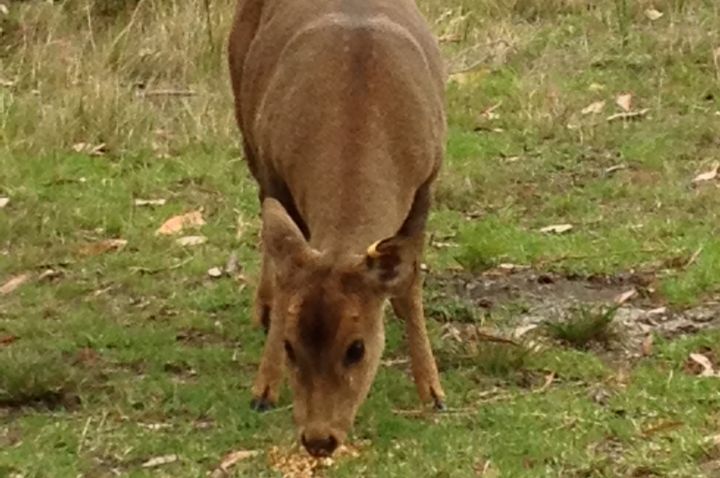
Lead researcher Erin Hill, from the School of Life Sciences at La Trobe University, said the study is the first to show hog deer in Victoria are hybrids.
"Exactly when the hybridisation occurred is unknown. It may have occurred in their native range, in captivity prior to release, or following release in Victoria, as chital deer were introduced at about the same time," Ms Hill said.
"We examined and sequenced the genetic makeup of 80 deer in Victoria and found no trace of pure hog deer living in the wild.
Associate Professor Jan Strugnell, from James Cook University, also an author on the study, said that established chital populations in Australia only exist in pockets in Queensland and New South Wales.
"Given chital species were eradicated in Victoria almost 100 years ago, it's clear this hybrid species has survived over generations because it is fertile."
Ms Hill said that the discovery of widespread hybridisation could affect the management of hog deer in Victoria.
"This is due to the long-held belief that this introduced species could play an essential role in the conservation of the species throughout its native range," Ms Hill said.
"Victoria is home to one of the few remaining stable populations of hog deer left in the world."
Ms Hill said it is vital to stress the importance of the introduced species for conservation, despite their newly discovered hybrid status.
"Our study has revealed that translocations of introduced Victorian deer back into the native range would likely need to be restricted to areas where hog deer and chital co-exist naturally," Ms Hill said.
"This would include the northern regions of India, where native chital and hog deer are endangered due to overhunting and habitat loss."
Ms Hill said more research is needed before translocations can occur.
"The next steps are to assess the hybridisation rate of hog deer and chital within the native range in India, and to further explore the idea of translocating Victorian hog deer back to the native range by measuring the levels of genetic variation within the Victorian population," Ms Hill said.
"Genetic variation is important as it allows individuals to adapt to their environment, and so it is important to reintroduce as much genetic variation as possible back into the native range to ensure long-term survival of the species."
Erin Hill, Adrian Linacre, Simon Toop, Nicholas Murphy, Jan Strugnell. Widespread hybridization in the introduced hog deer population of Victoria, Australia, and its implications for conservation. Ecology and Evolution, 2019; DOI: 10.1002/ece3.5603
Harnessing Tomato Jumping Genes Could Help Speed-Breed Drought-Resistant Crops
September 16, 2019: University of Cambridge
Once dismissed as 'junk DNA' that served no purpose, a family of 'jumping genes' found in tomatoes has the potential to accelerate crop breeding for traits such as improved drought resistance.
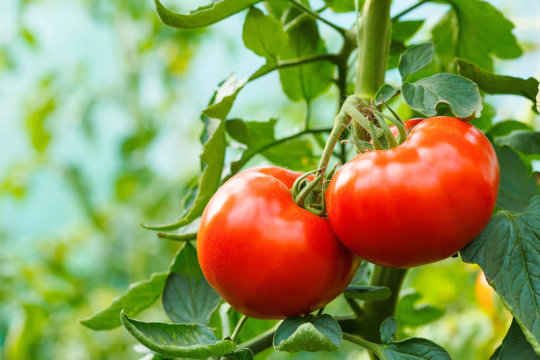
Researchers from the University of Cambridge's Sainsbury Laboratory (SLCU) and Department of Plant Sciences have discovered that drought stress triggers the activity of a family of jumping genes (Rider retrotransposons) previously known to contribute to fruit shape and colour in tomatoes. Their characterisation of Rider, published today in the journal PLOS Genetics, revealed that the Rider family is also present and potentially active in other crops, highlighting its potential as a source of new trait variations that could help plants better cope with more extreme conditions driven by our changing climate.
"Transposons carry huge potential for crop improvement. They are powerful drivers of trait diversity, and while we have been harnessing these traits to improve our crops for generations, we are now starting to understand the molecular mechanisms involved," said Dr Matthias Benoit, the paper's first author, formerly at SLCU.
Transposons, more commonly called jumping genes, are mobile snippets of DNA code that can copy themselves into new positions within the genome -- the genetic code of an organism. They can change, disrupt or amplify genes, or have no effect at all. Discovered in corn kernels by Nobel prize-winning scientist Barbara McClintock in the 1940s, only now are scientists realising that transposons are not junk at all but actually play an important role in the evolutionary process, and in altering gene expression and the physical characteristics of plants.
Using the jumping genes already present in plants to generate new characteristics would be a significant leap forward from traditional breeding techniques, making it possible to rapidly generate new traits in crops that have traditionally been bred to produce uniform shapes, colours and sizes to make harvesting more efficient and maximise yield. They would enable production of an enormous diversity of new traits, which could then be refined and optimised by gene targeting technologies.
"In a large population size, such as a tomato field, in which transposons are activated in each individual we would expect to see an enormous diversity of new traits. By controlling this 'random mutation' process within the plant we can accelerate this process to generate new phenotypes that we could not even imagine," said Dr Hajk Drost at SLCU, a co-author of the paper.
Today's gene targeting technologies are very powerful, but often require some functional understanding of the underlying gene to yield useful results and usually only target one or a few genes. Transposon activity is a native tool already present within the plant, which can be harnessed to generate new phenotypes or resistances and complement gene targeting efforts. Using transposons offers a transgene-free method of breeding that acknowledges the current EU legislation on Genetically Modified Organisms.
The work also revealed that Rider is present in several plant species, including economically important crops such as rapeseed, beetroot and quinoa. This wide abundance encourages further investigations into how it can be activated in a controlled way, or reactivated or re-introduced into plants that currently have mute Rider elements so that their potential can be regained. Such an approach has the potential to significantly reduce breeding time compared to traditional methods.
"Identifying that Rider activity is triggered by drought suggests that it can create new gene regulatory networks that would help a plant respond to drought," said Benoit. "This means we could harness Rider to breed crops that are better adapted to drought stress by providing drought responsiveness to genes already present in crops. This is particularly significant in times of global warming, where there is an urgent need to breed more resilient crops."
This work was supported by the European Research Council and the Gatsby Charitable Foundation.
Matthias Benoit, Hajk-Georg Drost, Marco Catoni, Quentin Gouil, Sara Lopez-Gomollon, David Baulcombe, Jerzy Paszkowski. Environmental and epigenetic regulation of Rider retrotransposons in tomato. PLOS Genetics, 2019; 15 (9): e1008370 DOI: 10.1371/journal.pgen.1008370
Ethanol Fuels Large-Scale Expansion Of Brazil's Farming Land
September 17, 2019: University of Queensland
A University of Queensland-led study has revealed that future demand for ethanol biofuel could potentially expand sugarcane farming land in Brazil by five million hectares by 2030.
UQ School of Earth and Environmental Sciences researcher Milton Aurelio Uba de Andrade Junior said that because Brazil produced ethanol from sugarcane, future biofuel demand would directly impact land use.
"Our study has modelled scenarios forecasting future ethanol demand based on different trajectories for gross domestic product, population growth, fuel prices, blending policies, fleet composition and efficiency gains," he said.
"A high demand scenario fuelled by strong economic and population growth, soaring gasoline prices, and ambitious blending targets, could mean that current demand for ethanol in Brazil will be doubled by 2030.
"If this scenario occurs, then Brazil will need an additional five million hectares of land for sugarcane crops to meet this high demand."
Mr de Andrade Junior said that most of the additional sugarcane farms were likely to expand into pasturelands, minimising impact on native forests.
"A key assumption of our modelling is that Brazil's land-use policies, such as the sugarcane agro-ecological zoning, will continue to promote the increase of agricultural yields while minimising environmental impacts," he said.
"However, in the current context of high uncertainty on the environmental agenda, such land use policies need to be closely monitored and supported to ensure that the country's natural ecosystems and biodiversity remain protected."
Milton Aurelio Uba de Andrade Junior, Hugo Valin, Aline C. Soterroni, Fernando M. Ramos, Anthony Halog. Exploring future scenarios of ethanol demand in Brazil and their land-use implications. Energy Policy, 2019; 134: 110958 DOI: 10.1016/j.enpol.2019.110958
New Species Of Giant Salamander Is World's Biggest Amphibian: 74-Year-Old Museum Specimen
September 16, 2019: Zoological Society of London
Using DNA from museum specimens collected in the early 20th century, researchers from ZSL (Zoological Society of London) and London's Natural History Museum identified two new species of giant salamander -- one of which they suspect is the world's biggest amphibian.
Chinese giant salamanders, now classified as Critically Endangered, were once widespread throughout central, southern and eastern China. They have previously been considered a single species (Andrias davidianus). However, new analysis of 17 historical museum specimens and tissue samples from wild salamanders challenges this assumption.
The paper, published today (17.09.2019) in the journal Ecology and Evolution, found three distinct genetic lineages in salamanders from different river systems and mountain ranges across China. These lineages are sufficiently genetically different that they represent separate species: Andrias davidianus, Andrias sligoi, and a third species which has yet to be named.
One of the newly identified species, the South China giant salamander (Andrias sligoi), was first proposed in the 1920s based on an unusual salamander from southern China that lived at the time at London Zoo. The idea was then abandoned but has been confirmed by today's study. The team used the same animal, now preserved as a specimen in the Natural History Museum after living for 20 years at the Zoo, to define the characteristics of the new species.
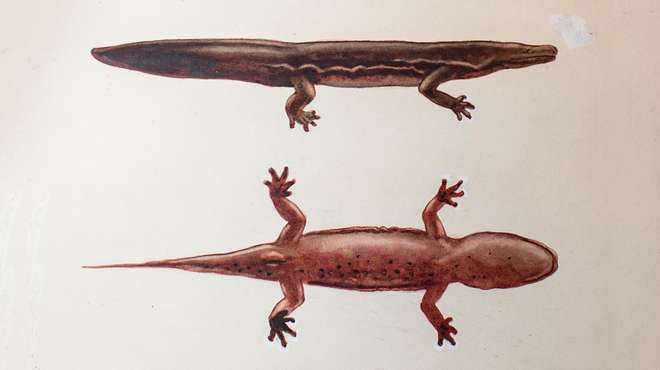
A sligoi painting. © ZSL
The other unnamed new species, from Huangshan (the Yellow Mountains), is still only known from tissue samples and has yet to be formally described.
The study's lead author, Professor Samuel Turvey of ZSL's Institute of Zoology, said: "Our analysis reveals that Chinese giant salamander species diverged between 3.1 and 2.4 million years ago. These dates correspond to a period of mountain formation in China as the Tibetan Plateau rose rapidly, which could have isolated giant salamander populations and led to the evolution of distinct species in different landscapes.
The decline in wild Chinese giant salamander numbers has been catastrophic, mainly due to recent overexploitation for food. We hope that this new understanding of their species diversity has arrived in time to support their successful conservation, but urgent measures are required to protect any viable giant salamander populations that might remain.
Salamanders are currently moved widely around China, for conservation translocation and to stock farms that cater for China's luxury food market. Conservation plans must now be updated to recognise the existence of multiple giant salamander species, and movement of these animals should be prohibited to reduce the risk of disease transfer, competition, and genetic hybridisation."
Chinese giant salamanders are the world's biggest amphibians. The authors suggest that the newly discovered South China giant salamander -- which can reach nearly two metres -- is the largest of the three and is therefore the largest of the 8,000 or so amphibian species alive today.
ZSL works in China to protect giant salamanders in the wild and to raise their profile through our exhibit at London Zoo, where zookeepers welcomed four juveniles in September 2016. The salamanders were seized by Border Force after an attempt to illegally import them. One of the salamanders, named Professor Lew, has since moved into a state-of-the-art tank in the Zoo's Reptile House, where visitors can come face-to-face with one of nature's giants. The three others are currently being cared for behind the scenes. Keepers will eventually introduce another animal to Professor Lew as a mate and the remaining two may then move to a different zoo, as the adults are highly territorial and need to be housed in separate enclosures.
Melissa Marr, PHD researcher at the Natural History Museum London added: "These findings come at a time where urgent interventions are required to save Chinese giant salamanders in the wild. Our results indicate that tailored conservation measures should be put in place that preserve the genetic integrity of each distinct species. Our research also highlights the central role that The Natural History Museum's collections can play in the conservation of Critically Endangered species."
Samuel T. Turvey, Melissa M. Marr, Ian Barnes, Selina Brace, Benjamin Tapley, Robert W. Murphy, Ermi Zhao, Andrew A. Cunningham. Historical museum collections clarify the evolutionary history of cryptic species radiation in the world's largest amphibians. Ecology and Evolution, 2019; DOI: 10.1002/ece3.5257
Disclaimer: These articles are not intended to provide medical advice, diagnosis or treatment. Views expressed here do not necessarily reflect those of Pittwater Online News or its staff.